Serbia
Having traveled the Balkans extensively, we are still missing one piece of the puzzle on the map: Serbia. But in order to develop a deeper understanding of the historical background to the Balkan war and the deep rifts that still exist today, a trip to the heart of the former Yugoslavia is essential. Until a few years ago, perhaps even until today, Serbia clung to the long gray and decayed dream of a united empire under Serbian rule. Yugoslavia fell apart into individual independent states, with Montenegro splitting off from Serbia in 2006 and Kosovo in a unilateral declaration of independence in 2008.
The roof tent on the car, luggage on the loading area, everything you need to be self-sufficient for two or three days. The itinerary includes cities and nature in equal measure. Our heads are filled with expectations: rugged mountains, serpentine roads, national parks with bears and wolves, hospitable people and a dark nationalism. Which of these will come true?
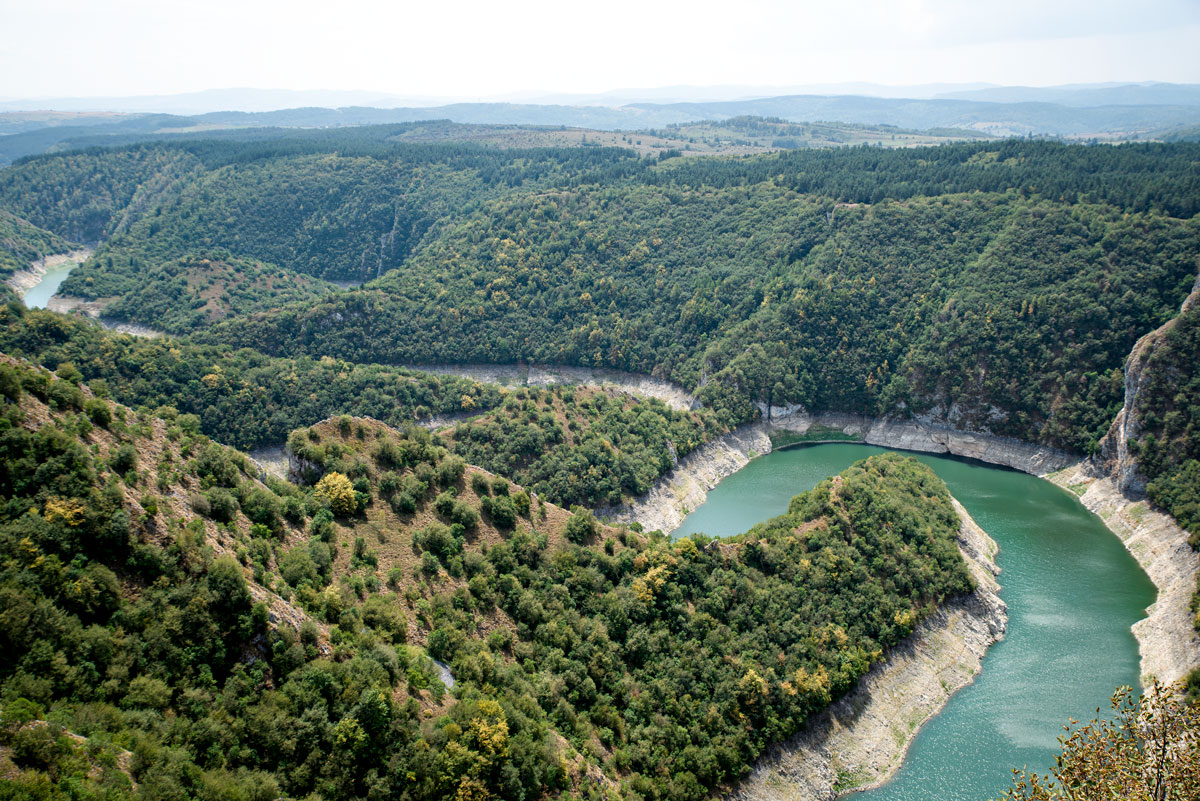
On this hot August afternoon, the pedestrian zone in Novi Sad is eerily quiet. Popcorn stands are closed, a handful of men hang around in just a few cafés and the few passers-by huddle in the shadows of the houses. A tanker truck is parked on the market square – cool drinking water can be tapped from a tap. The municipal theater is an old communist building, the town hall is reminiscent of a bygone era in the century before last. In front of the synagogue: an open gate, no police protection, no graffiti. In the city park: a vast expanse of withered grass. Plastic bags floating in the pond. A dead duck on the bank. We meet a young family at the playground. They originally come from one of the other Balkan countries, but have moved to Serbia for job prospects. The father tells us about the hatred and rejection that the different ethnic groups still harbor towards each other.
As dusk falls, the city fills with life. The cafés are now filled to capacity. Smoking men trot past, laughing teenagers in the side streets. Children squeeze between the legs of adults. Colorful lights, dress-up artists and moving toy cars. A rose seller, a drummer. A few dinars in his old hat.
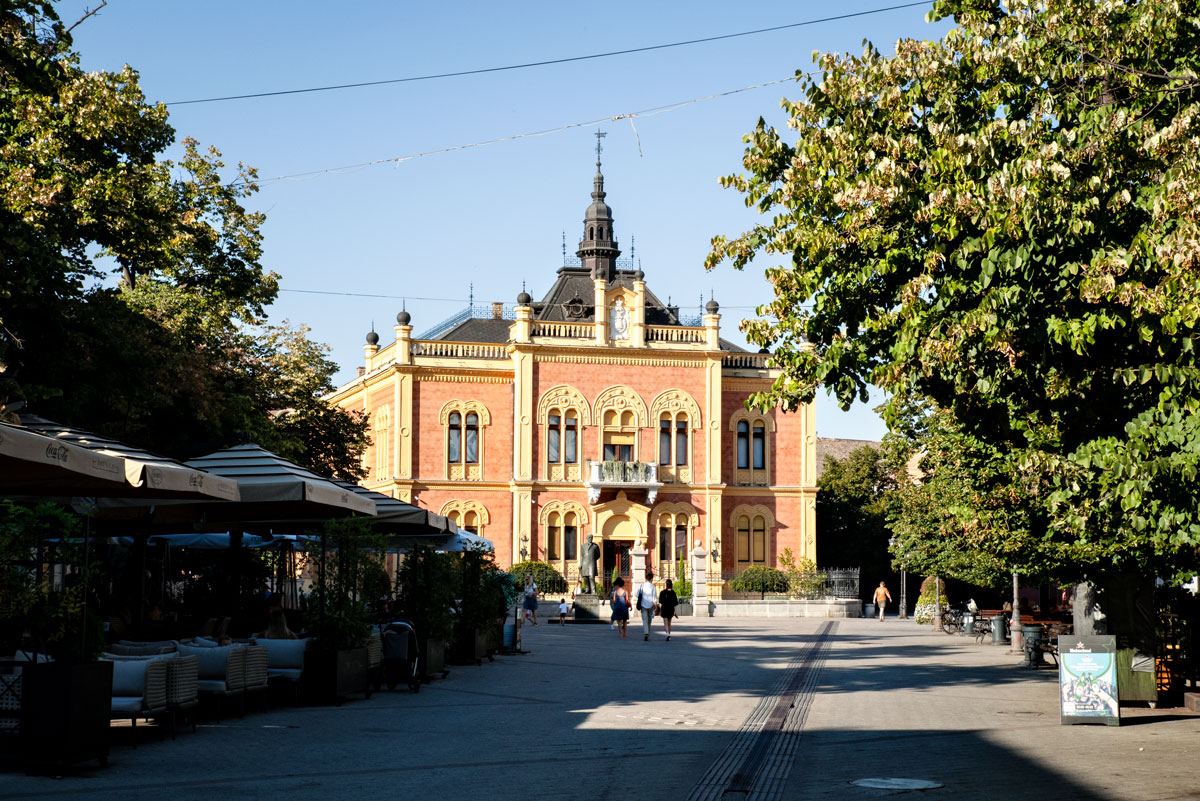
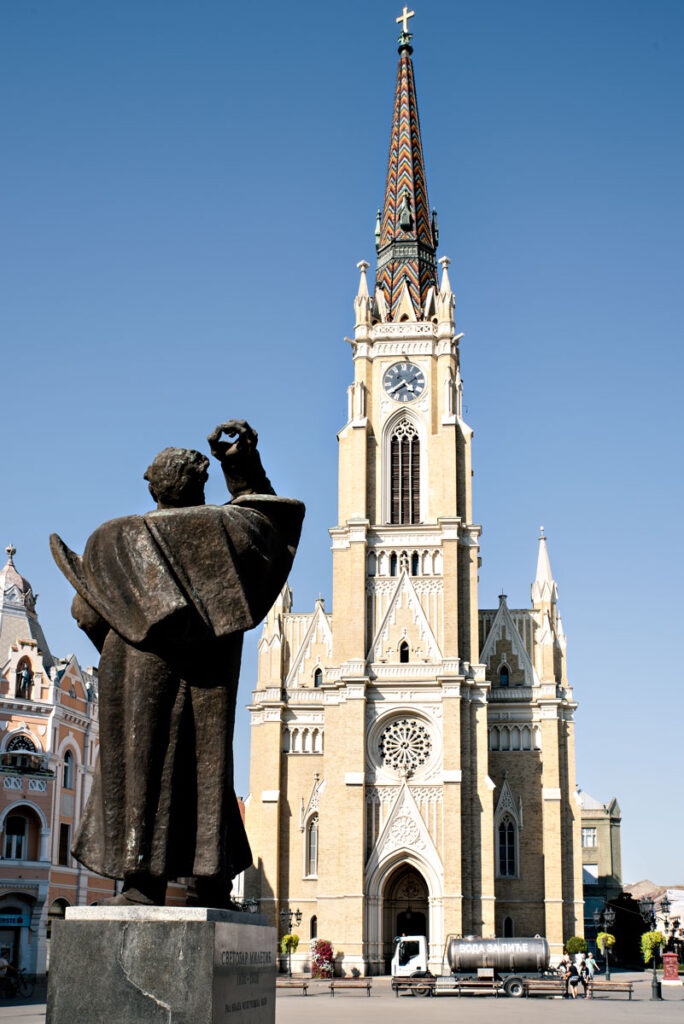
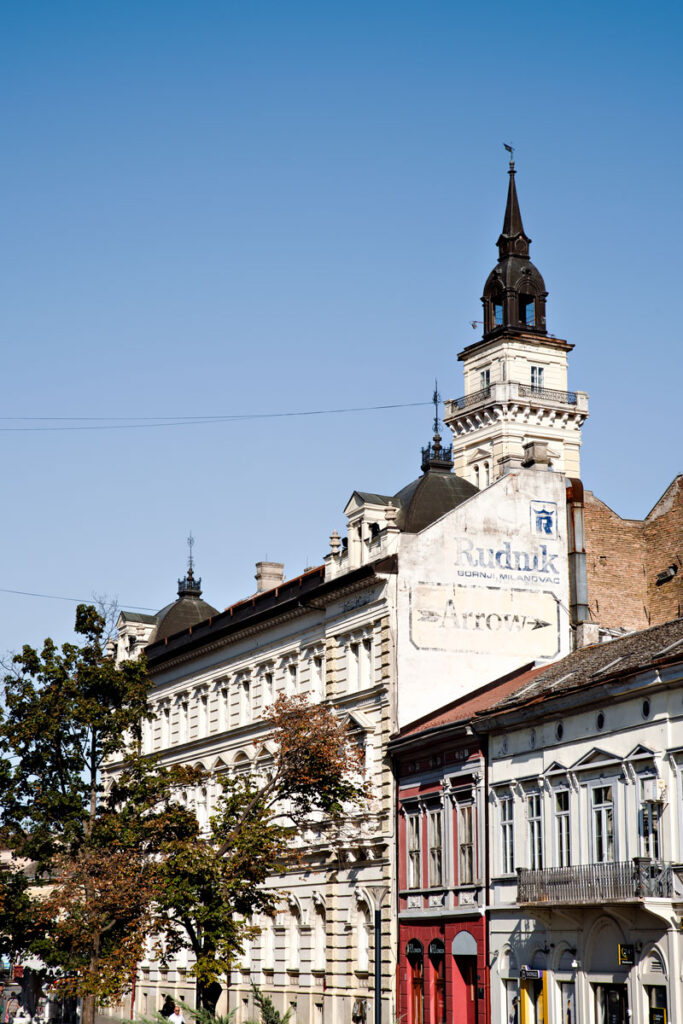
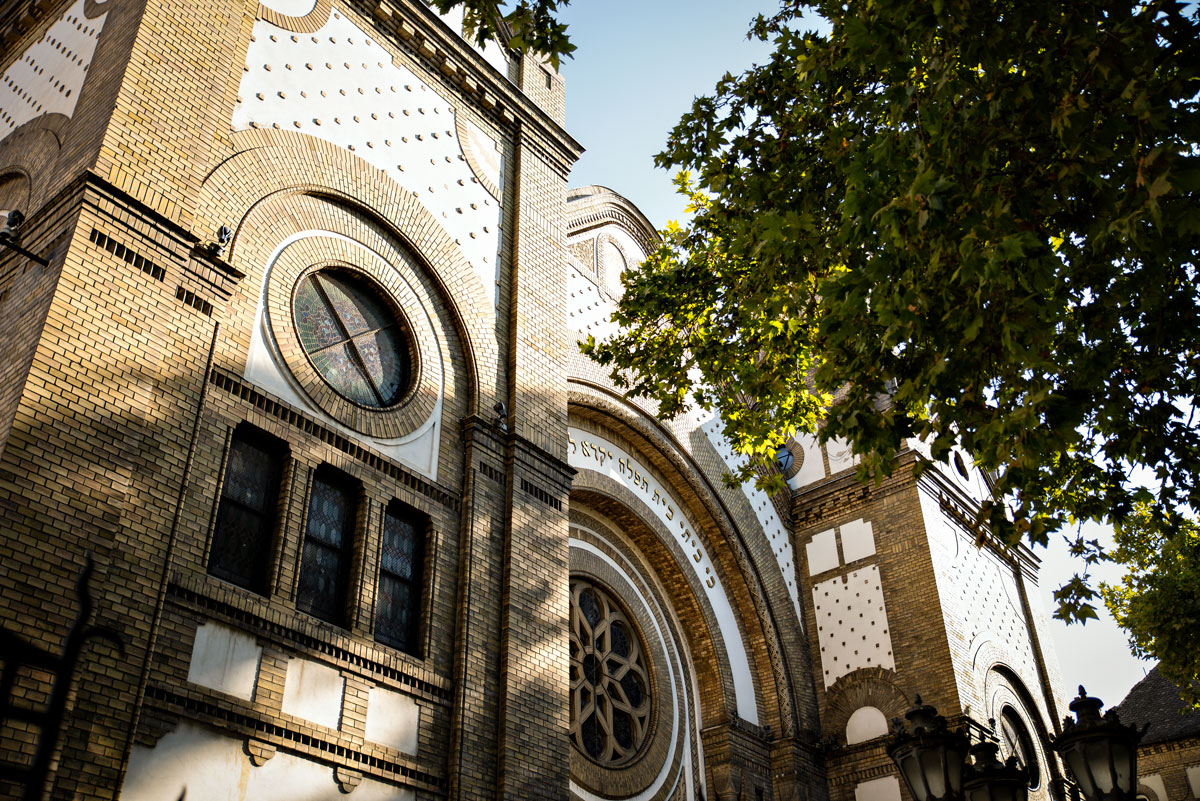
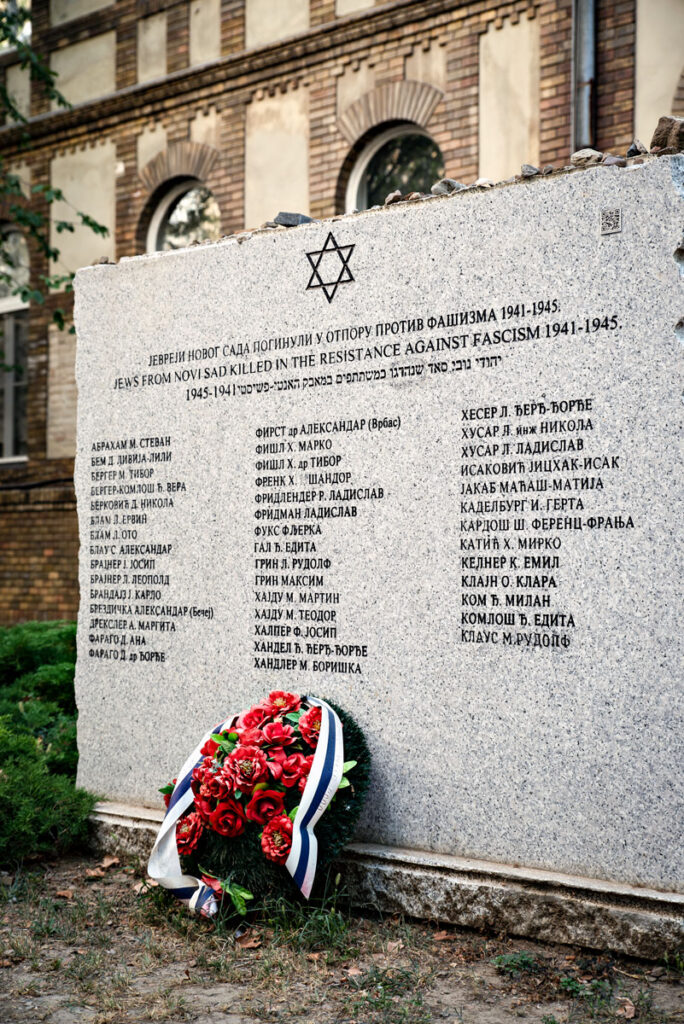
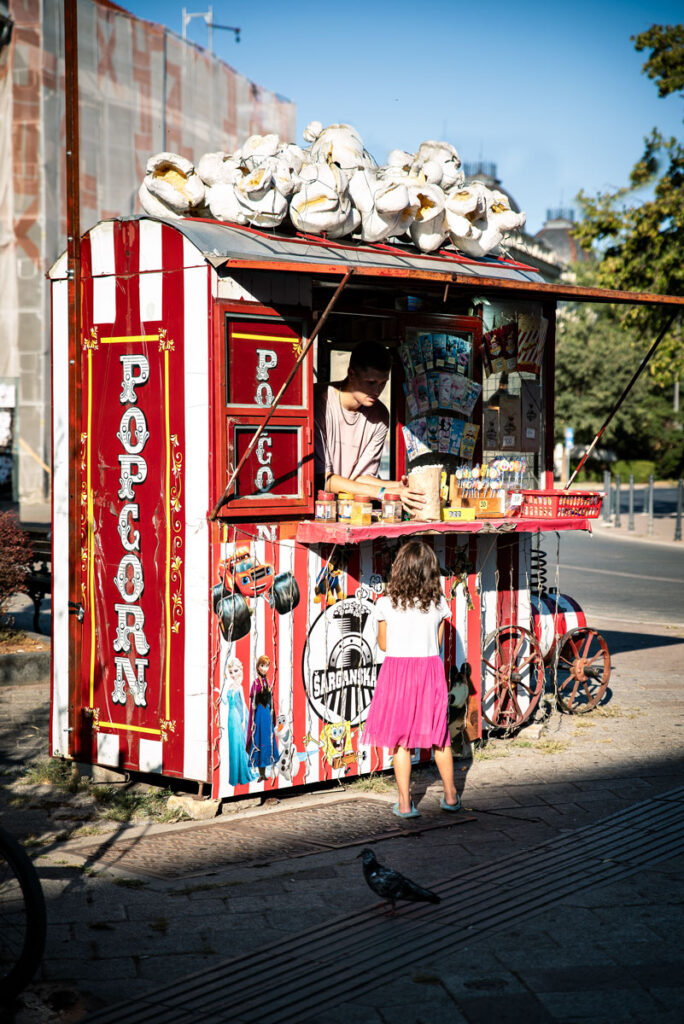
On the other side of the Danube lies the fortress of Novi Sad on a hill. Once the largest fortress in Europe, it was built as a defense against the Ottoman Empire, among other things. Today, the complex is home to museums, art studios, restaurants and music venues. From up here, we have a view of the entire city: the empty industrial halls in the north, the small strip of beach in the southeast, the gray housing estates in the city center. Church spires and modern glass facades rise up in between.
Once a year, party-loving people come together here for the Exit Festival. Exit could stand for the exit from an old era, the breaking with rarely questioned traditions and blind faith in history. Exit is the cosmopolitan Serbia that could have a future in the center of Europe.
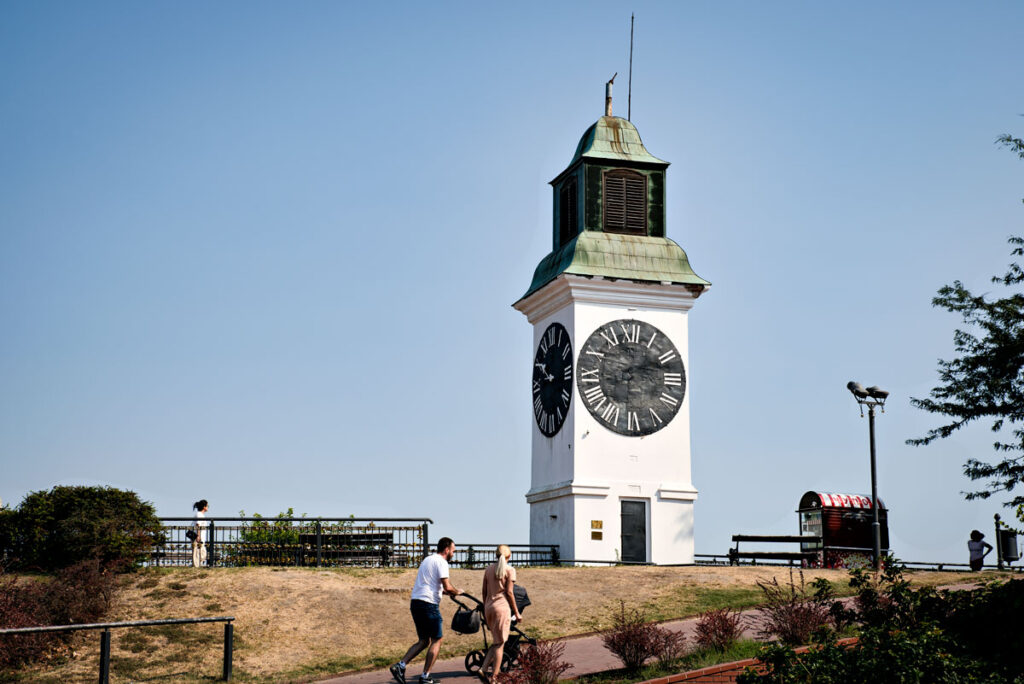
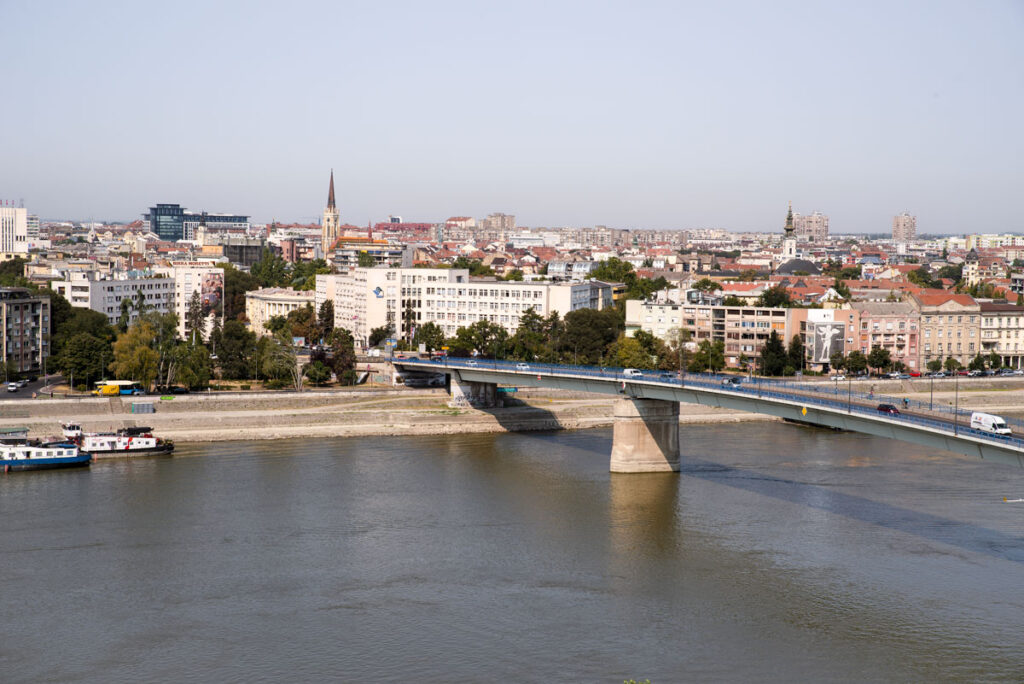
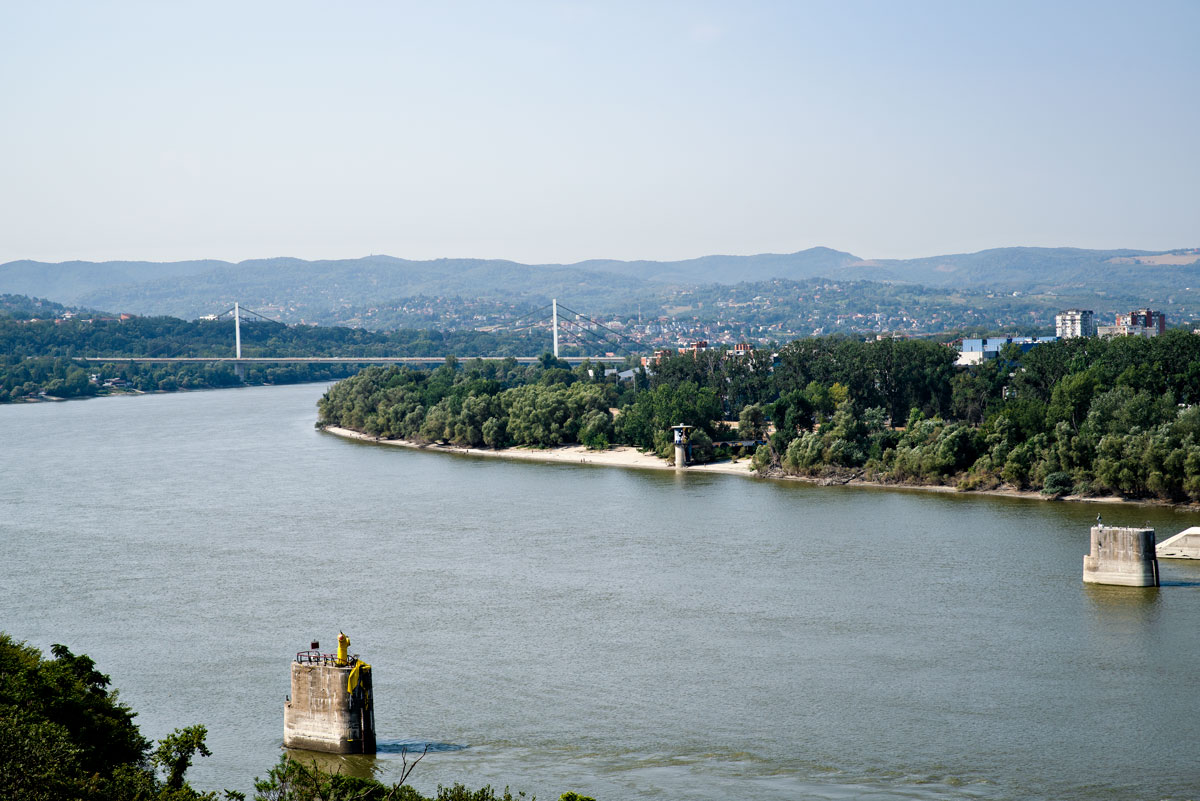
It’s over 40° Celsius outside. The landscape is yellow and parched. Sparse bushes and a few trees that seem to have been made for this heat. In winter, it can get bitterly cold here.
There is an Orthodox church on the side of the road. It has only recently been opened. None of us are dressed appropriately for the strict dress code to be allowed inside. A grim gatekeeper looks at us with an expressionless face. He tells us that we can take a quick look inside the church.
We drive on and soon reach a beautiful restaurant. Large, gnarled trees stretch their crowns over us and provide some shade. Simple wooden tables and chairs are spread out on an expansive veranda. A heavy, hearty grilled lunch is served. In the background, peacocks creep along the fence and cats play in the dusty earth.
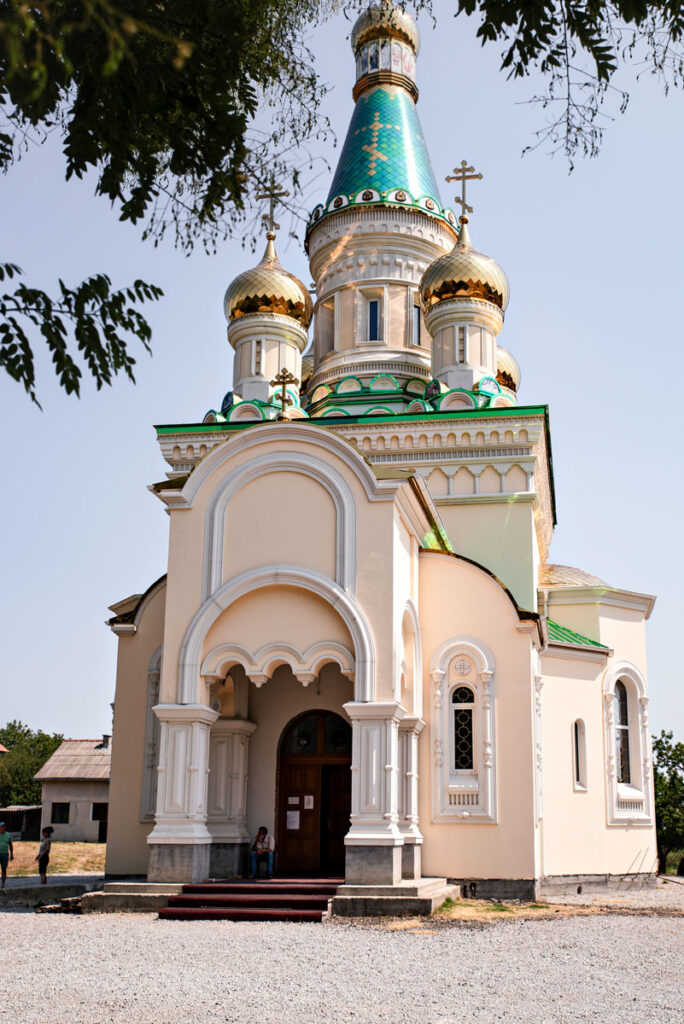
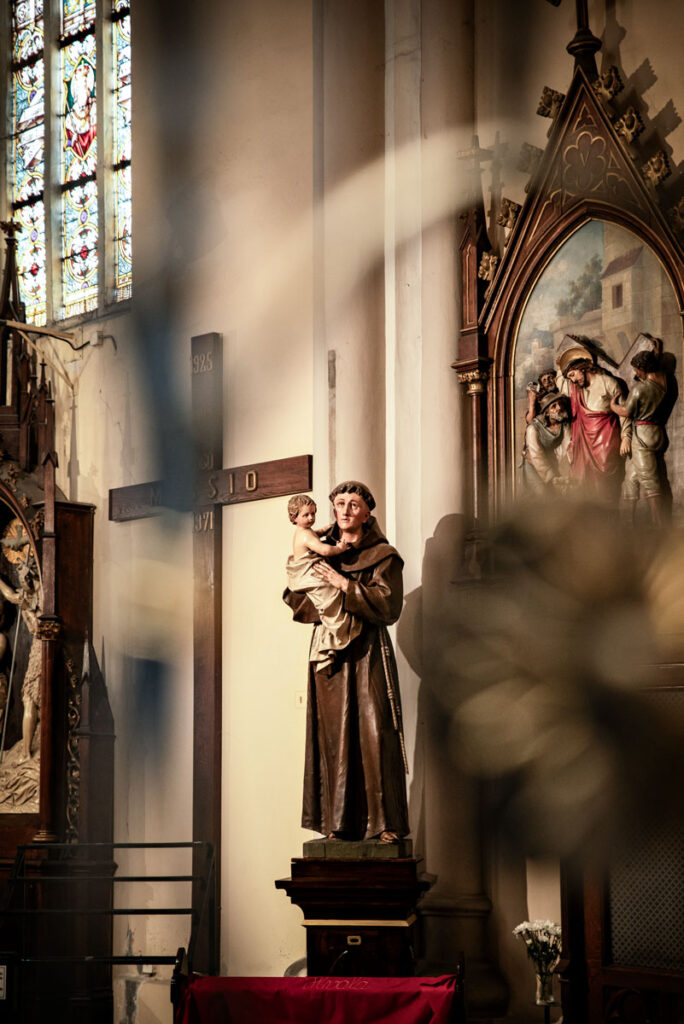
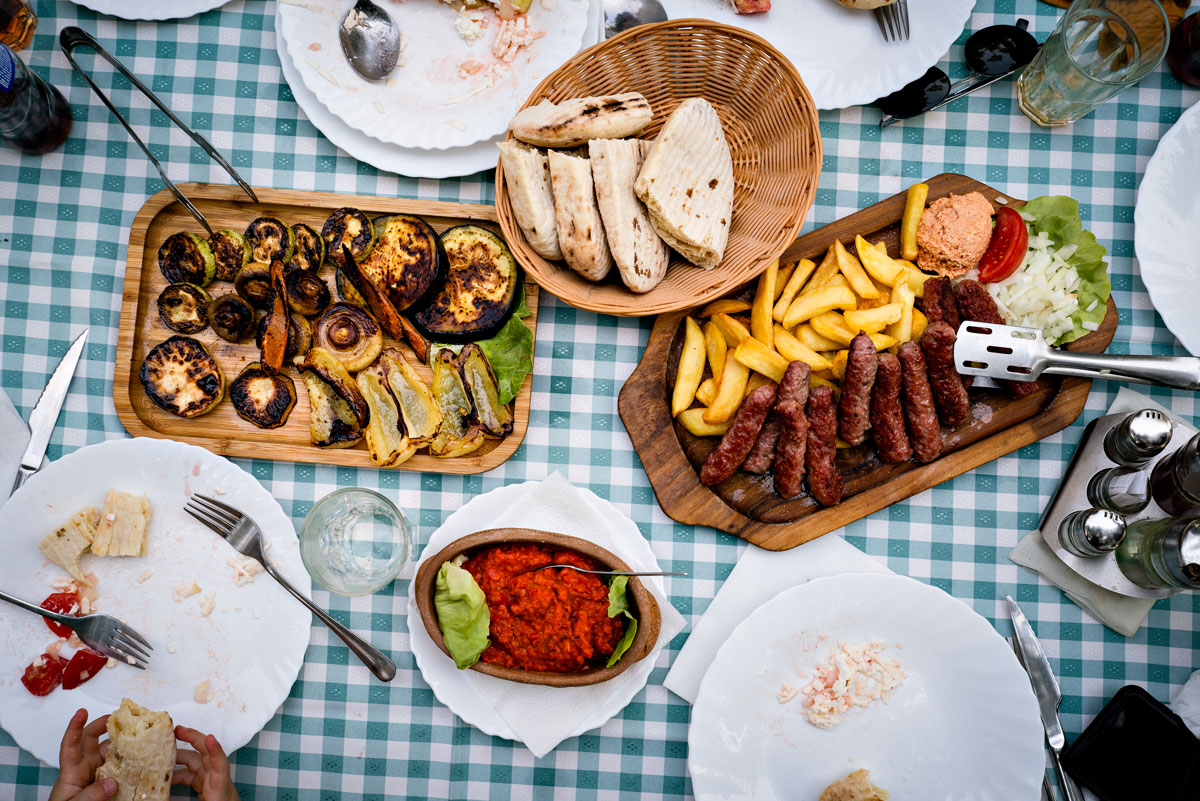
We put up at a campsite in Novi Belgrade. Old, run-down apartment blocks stand next to modern new buildings. Multi-lane roads cut through the neighborhoods, many gaps between buildings leave room for what is to come. A dying district, but at the same time a district on the rise. The afternoon is hot and we want to go to the water. So we drive to the river island of Ada Ciganlija and enjoy the cool waters of the Sava. The beach here is not an insider tip; we share it with many locals who also want to escape the heat. Even though the beach is rocky, ice cream, beer and roast meat are available everywhere. The parking areas are huge, as are the crowds. Men sit in the shade of some plane trees and play checkers.
The next day is no less hot, but sightseeing is on the agenda today. And so we stroll through Belgrade’s city center, the scenic bar district and Kalemegdan Park with its fort. On Republic Square, a defiant slogan is sprayed in huge letters on the façade of a building: “There was only one genocide in the Balkans – against the Serbs.” This statement leaves us perplexed.
After lunch, we arrive at the waterfront – cranes, excavators and workers are creating a new prestigious district with boutiques and chic restaurants. The Cathedral of St. Sava smells of incense and the past. Cool stone and men in black gowns. People say Belgrade is an ugly city. Characterized by cold socialism and concrete. Little green, few places to take a deep breath. Life in Belgrade takes place in the backyards. There are small restaurants and bars, parties and the real diamonds. But, people say, you don’t get to know Belgrade in one day, you have to immerse yourself deeply in the city to get something out of it.
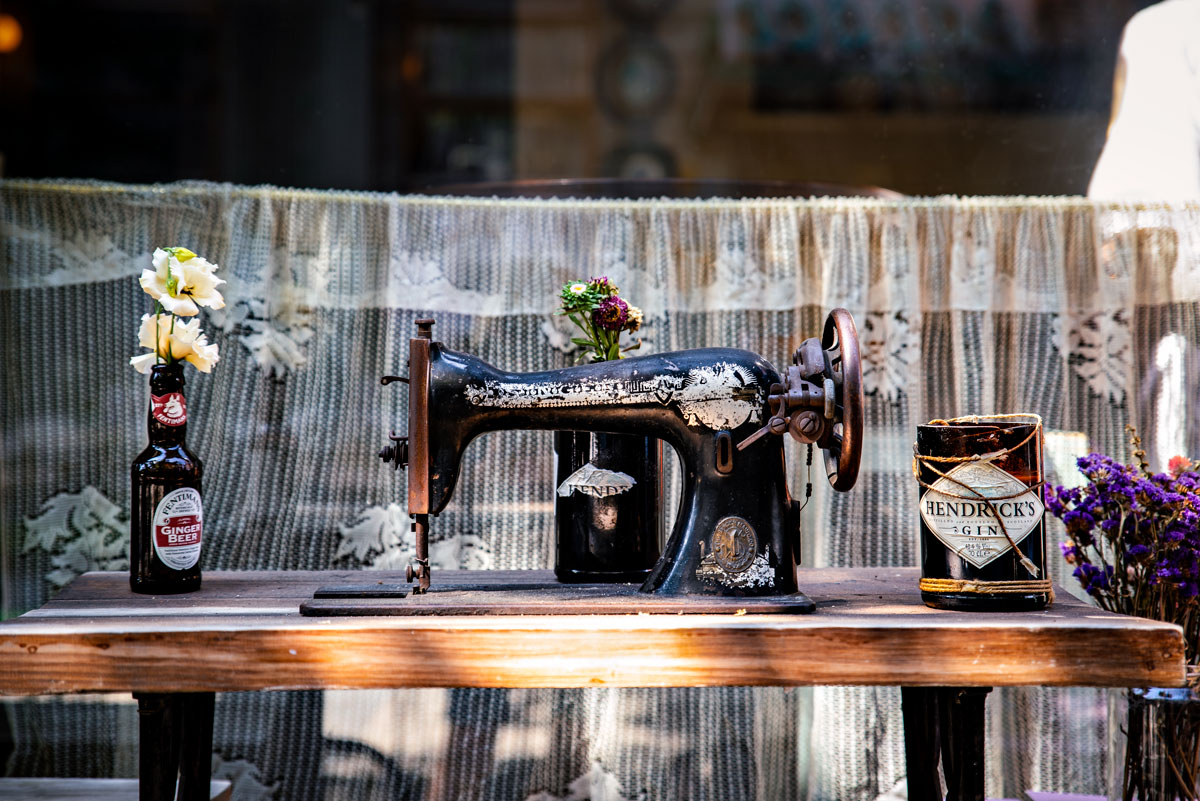
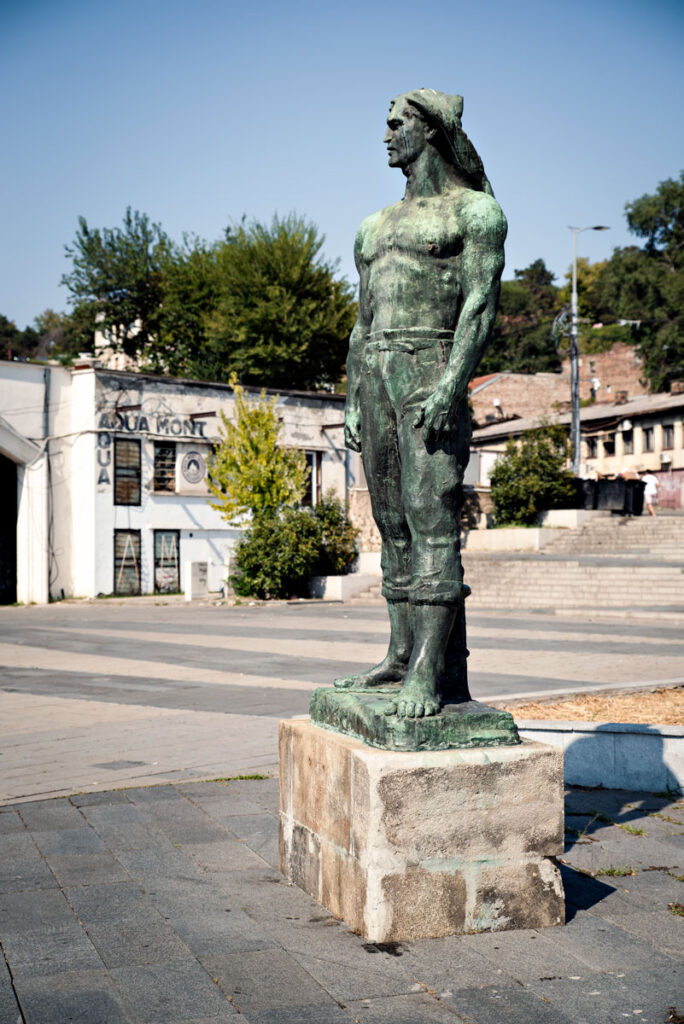
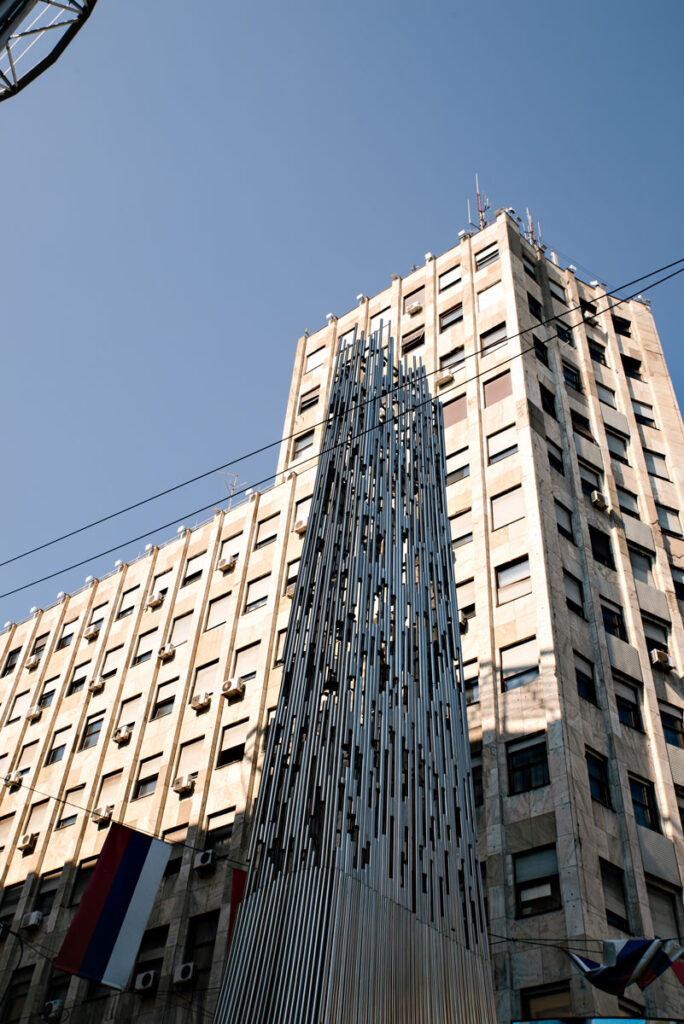
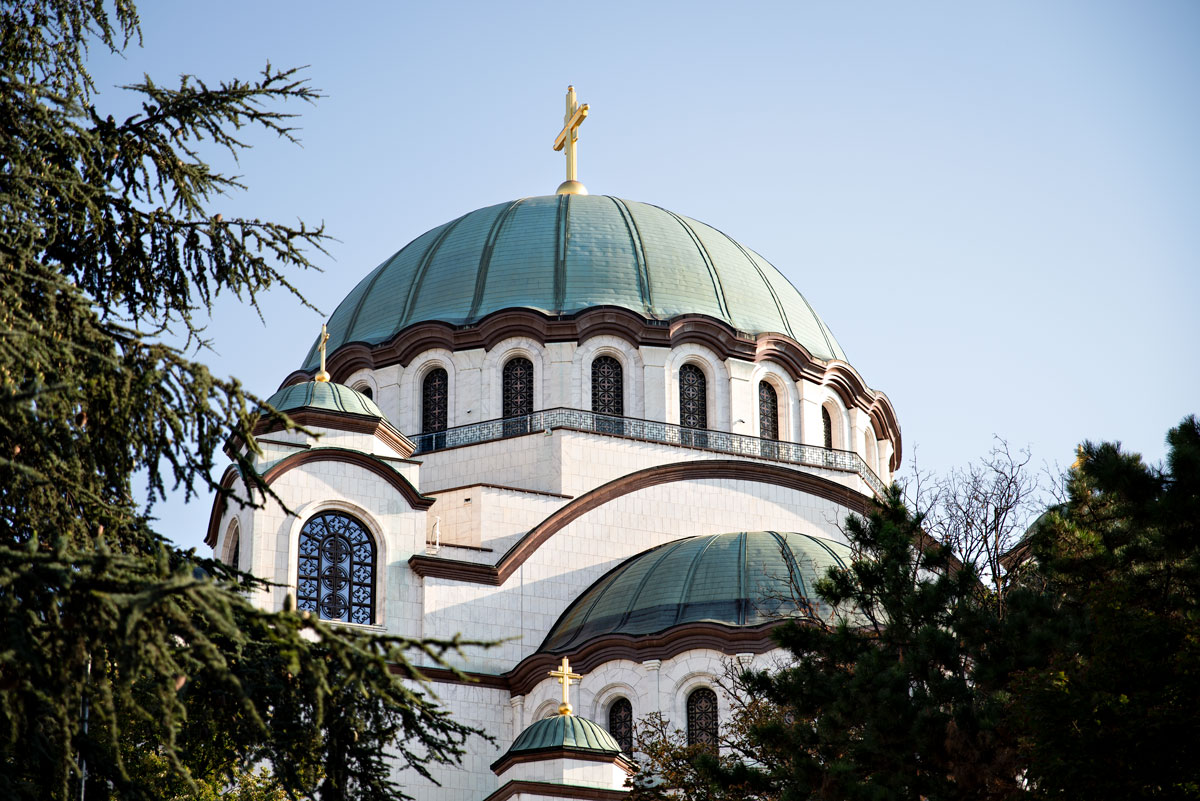
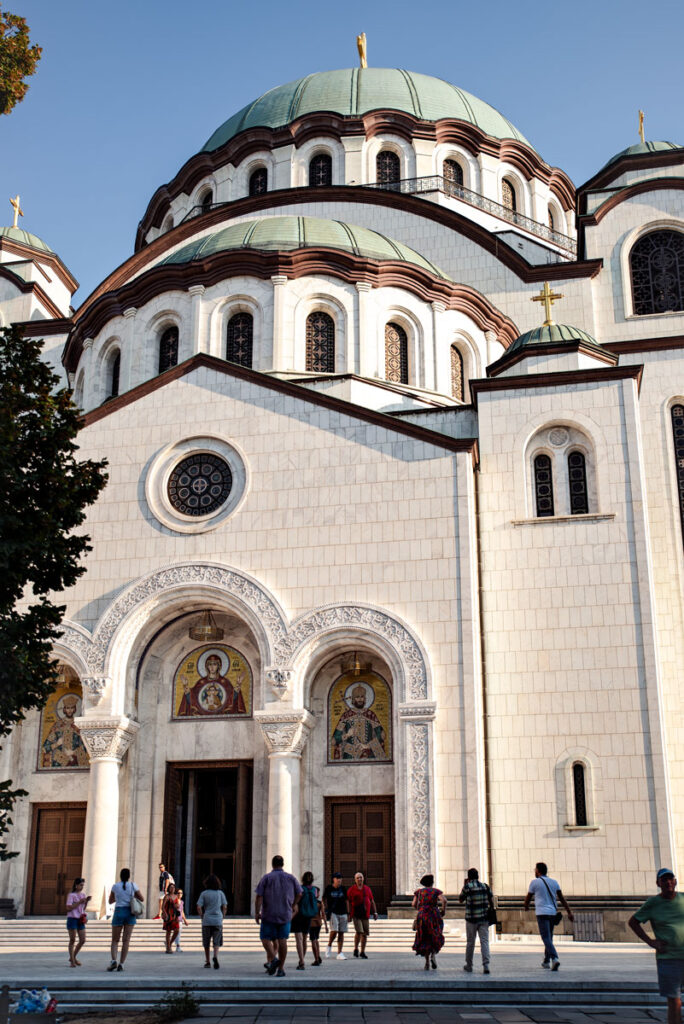
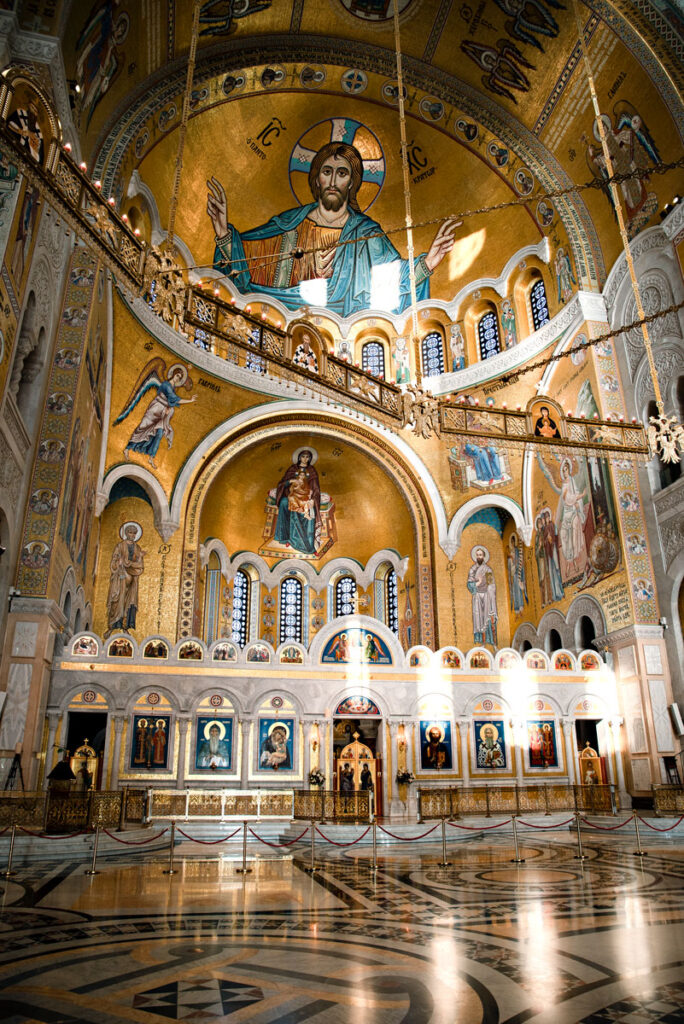
Our route takes us south to Niš. This tranquil town is the cultural center of Serbia. Especially in the summer months, numerous music events and concerts take place here, such as the Nišville Jazz Festival. As we reach the town, stages and food stalls are being set up in the park of the Niš fort. The first sound checks take place behind hastily erected screens. In the evening, everything will be filled with the syncopated beats of the drums, the gentle disharmonies of the guitars and the quirky bends of the saxophones.
The city itself is unspectacular. We see the same mix of socialist concrete buildings that are on the verge of final decay and impersonal glass-concrete-steel constructions that contain offices and showrooms. Orthodox churches, a central square full of life – the heart of the city. A pedestrian zone with cafés and restaurants. The Serbs, like the people of the Balkans in general, love everything sociable. They come in large groups, bringing family, relatives and friends with them. They enjoy their time with beer and cigarettes. The children play, the adults laugh. Life pulsates and the city breathes.
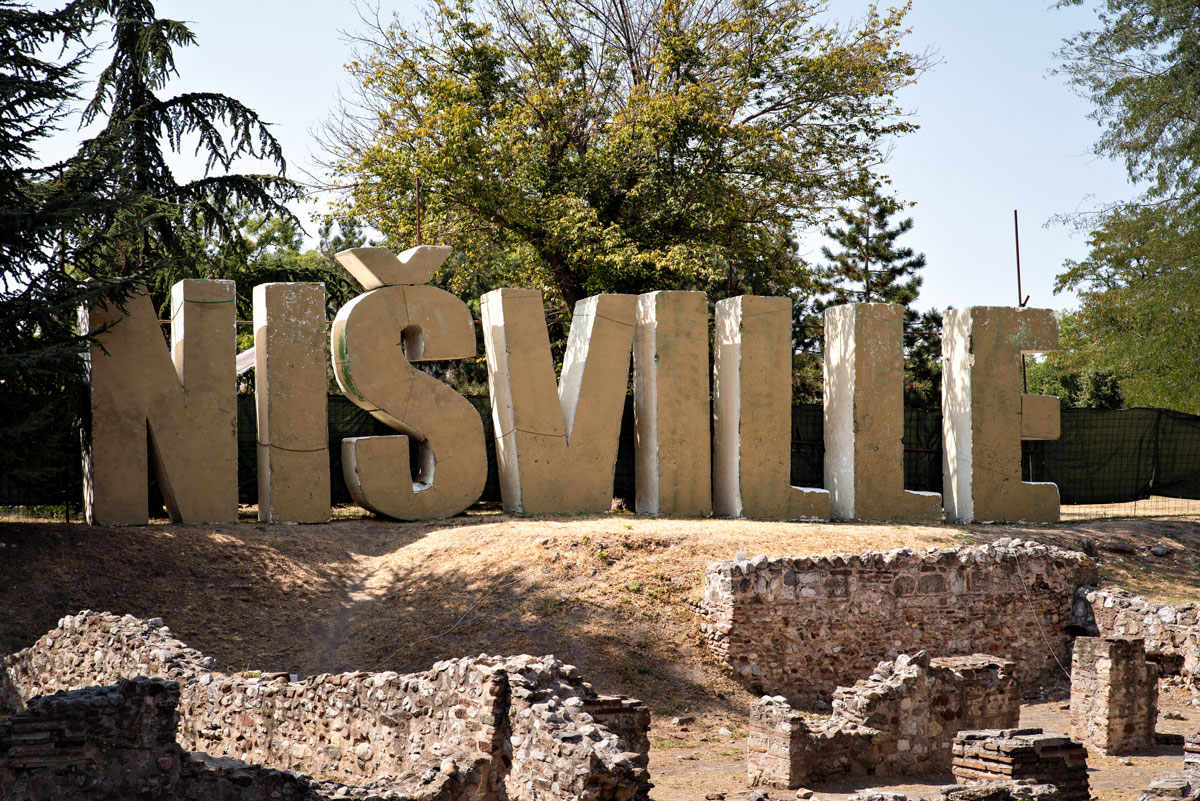
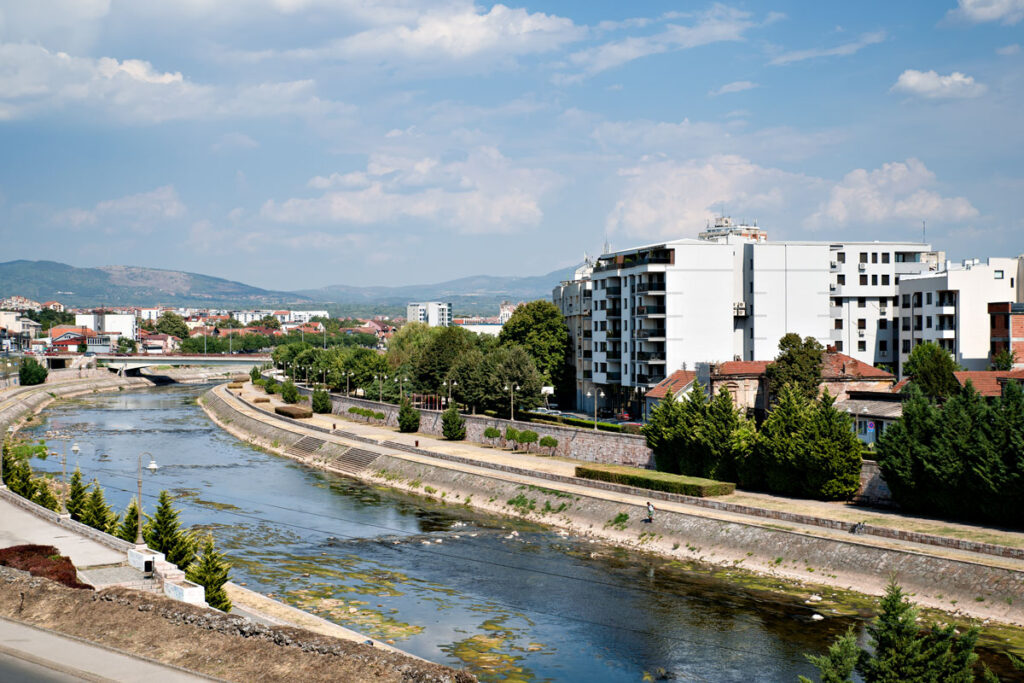
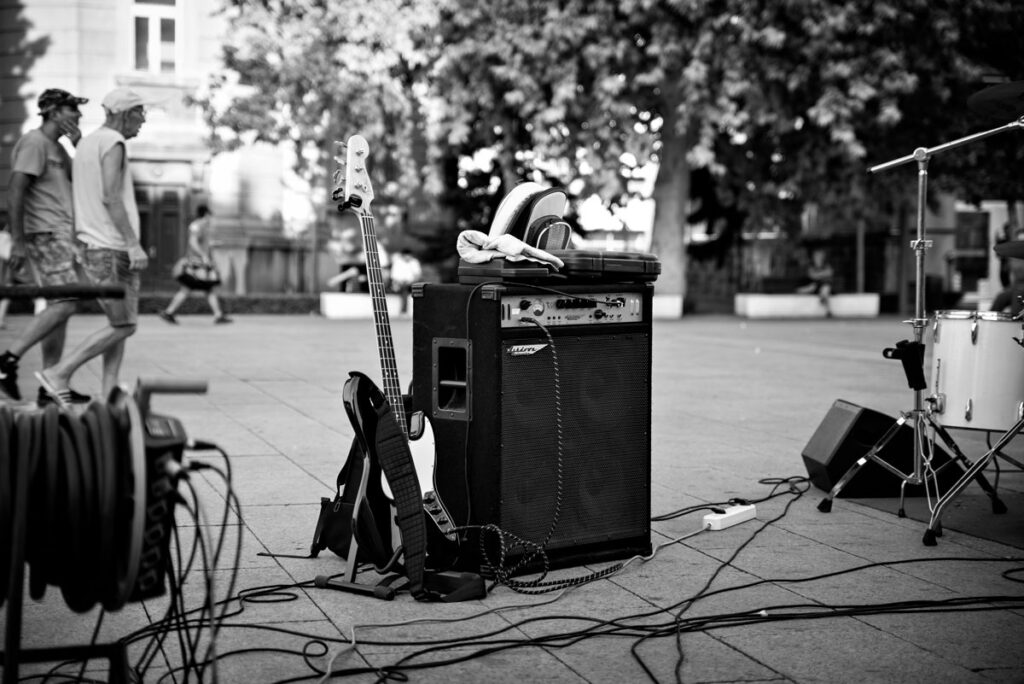
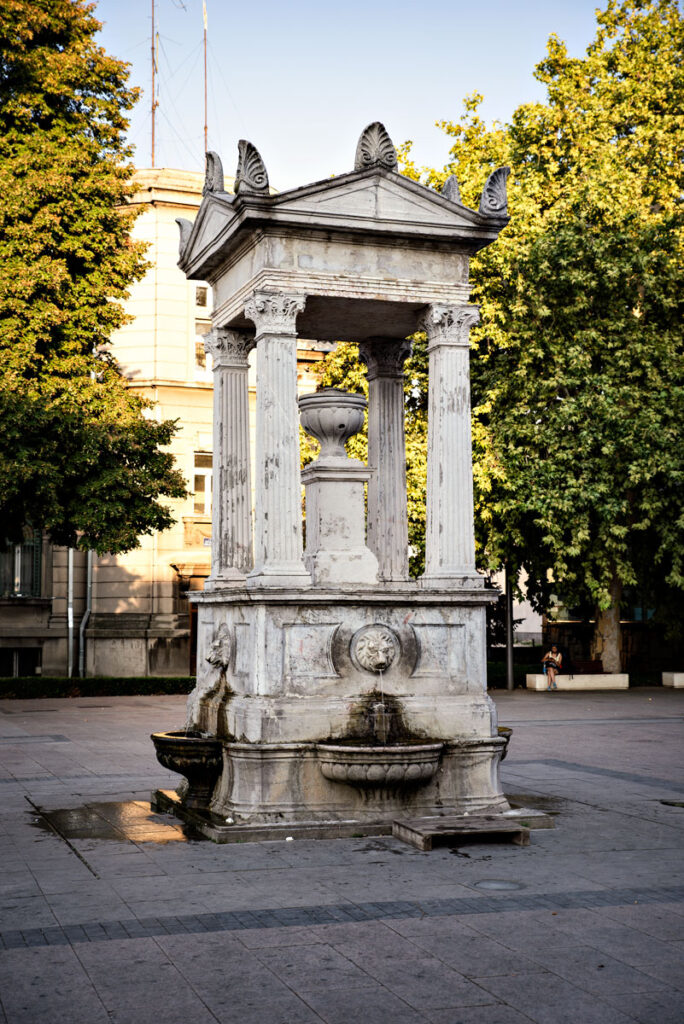
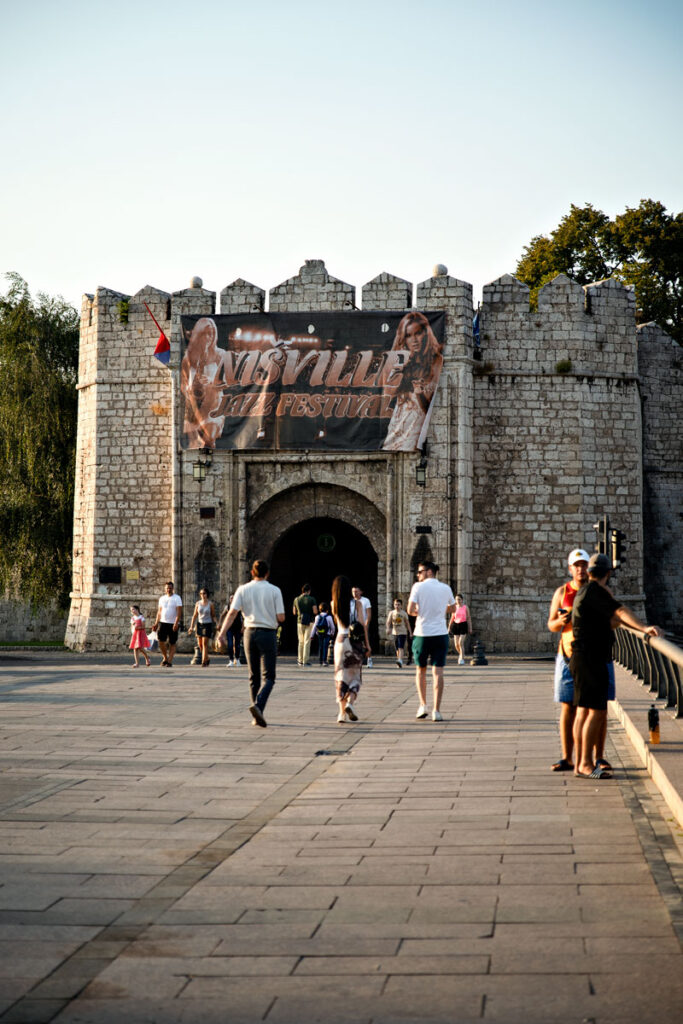
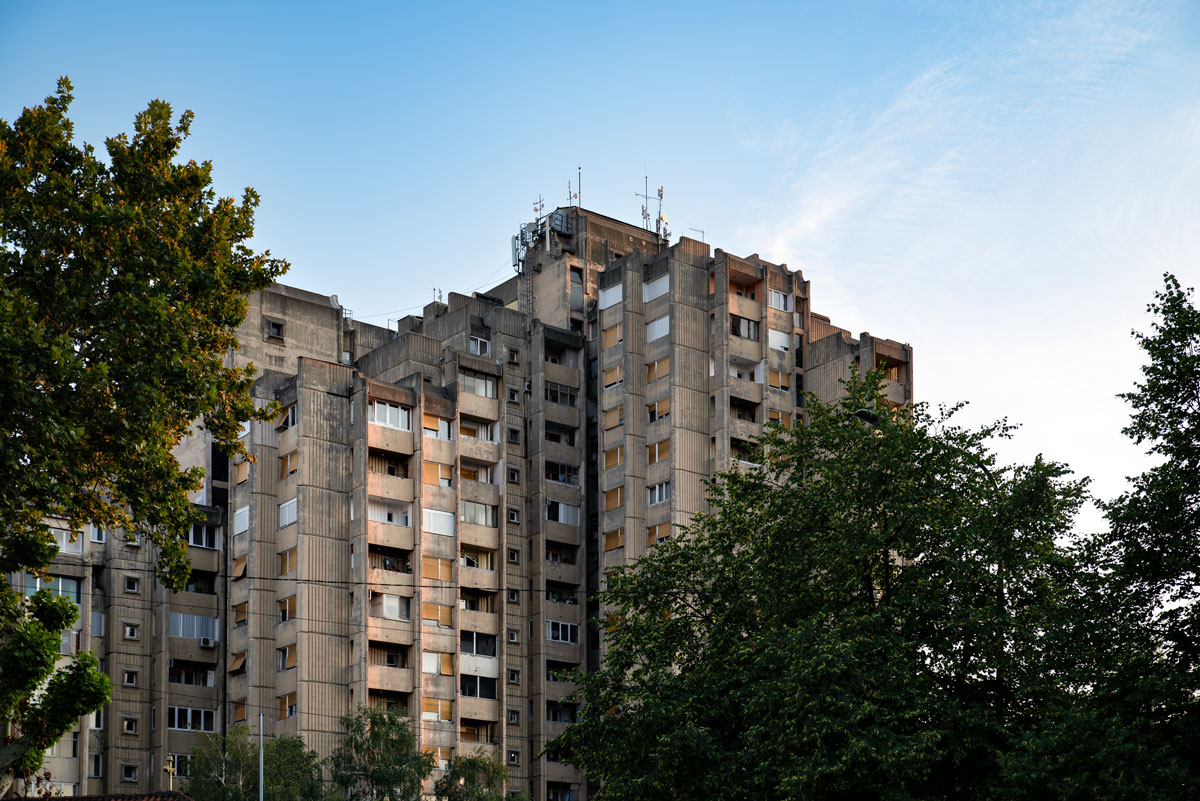
In the east of the city lies the Ćele Kula, a tower made of skulls. Today it stands inside a small chapel, a large number of skulls have been broken out of the mortar over the centuries. When some Serbian rebels fought back against the Ottoman occupiers in 1809, they were killed and this tower was built from their heads. The Ottomans probably wanted to set a deterrent example and humiliate their opponents. The story is told more heroically on plaques on the tower itself: the national hero Stevan Sinđelić ignited the gunpowder supply and caused it to explode after his army had been devastatingly decimated. This killed his soldiers and some Ottoman occupants. The skull tower itself is also reinterpreted. It is no longer a humiliating memorial, but a monument to this heroic deed.
Everywhere in the country we encounter a denial and reversal of history. The cruel massacre of Bosniaks at Srebrenica is denied, NATO is portrayed as the aggressor that attacked Serbia from the air and caused so many victims. In addition, they see themselves as victims of ethnic extermination, driven by the allied West. It is these lies and narratives that continue to deeply divide the Balkans today.
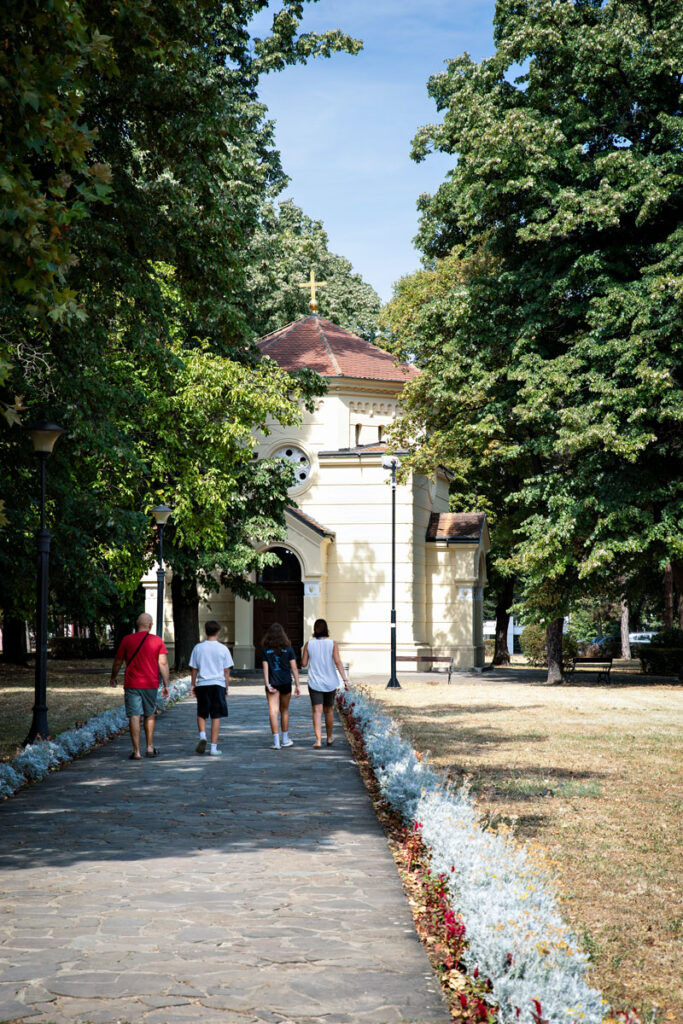
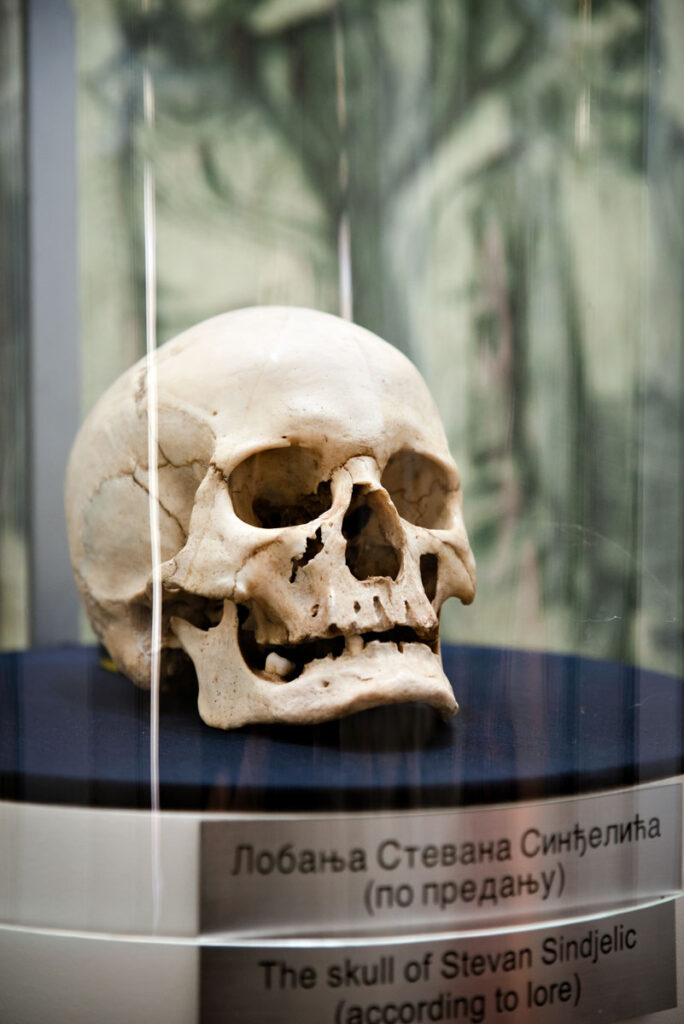
In the forests of southern Serbia, close to the Kosovan border, lies a mysterious valley. Red water bubbles up from the earth. At the end of the valley, a sand-colored rock face rises into the sky. Strangely shaped stone pyramids, large and small, rise up in front of it. According to old myths, the devil is up to mischief here. Fairies inhabit the forests and play tricks. At night, the hammer blows of the former miners can be heard echoing through the valley. A lonely church, built of wood, is the only rampart against the devilish. A holy place, a safe haven.
As we walk through Devil’s Town, we encounter nothing devilish. The sun is shining, families with children are walking in the shade of the trees and there is ice cream and cold beer in the adjoining restaurant. The red water is colored by the iron in the ground. Saxon miners once came to this region and extracted iron, copper and aluminum.
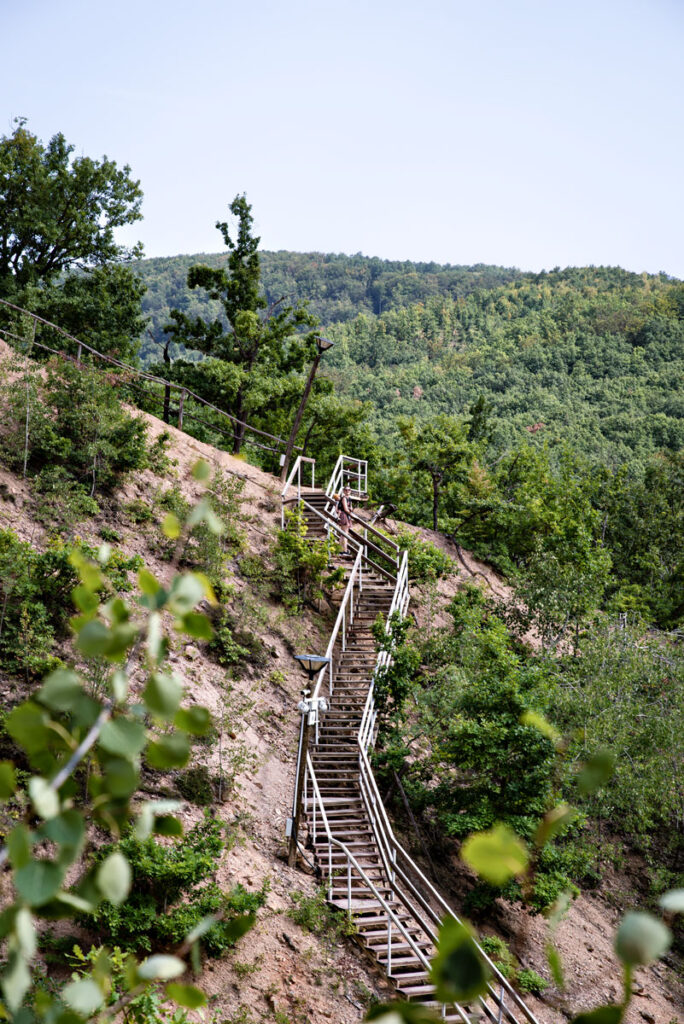
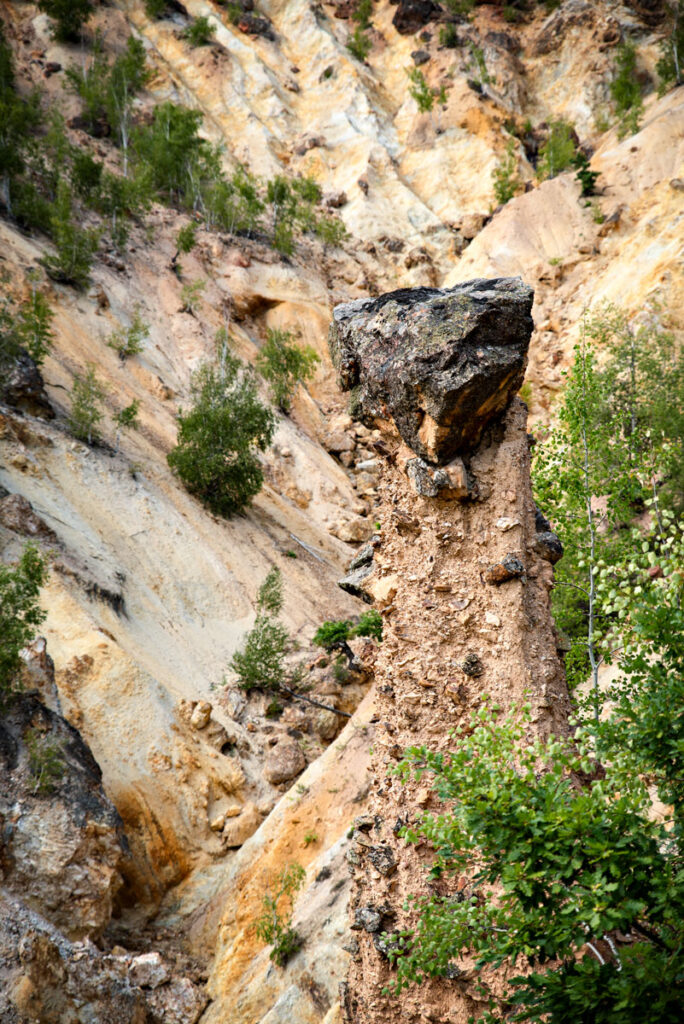
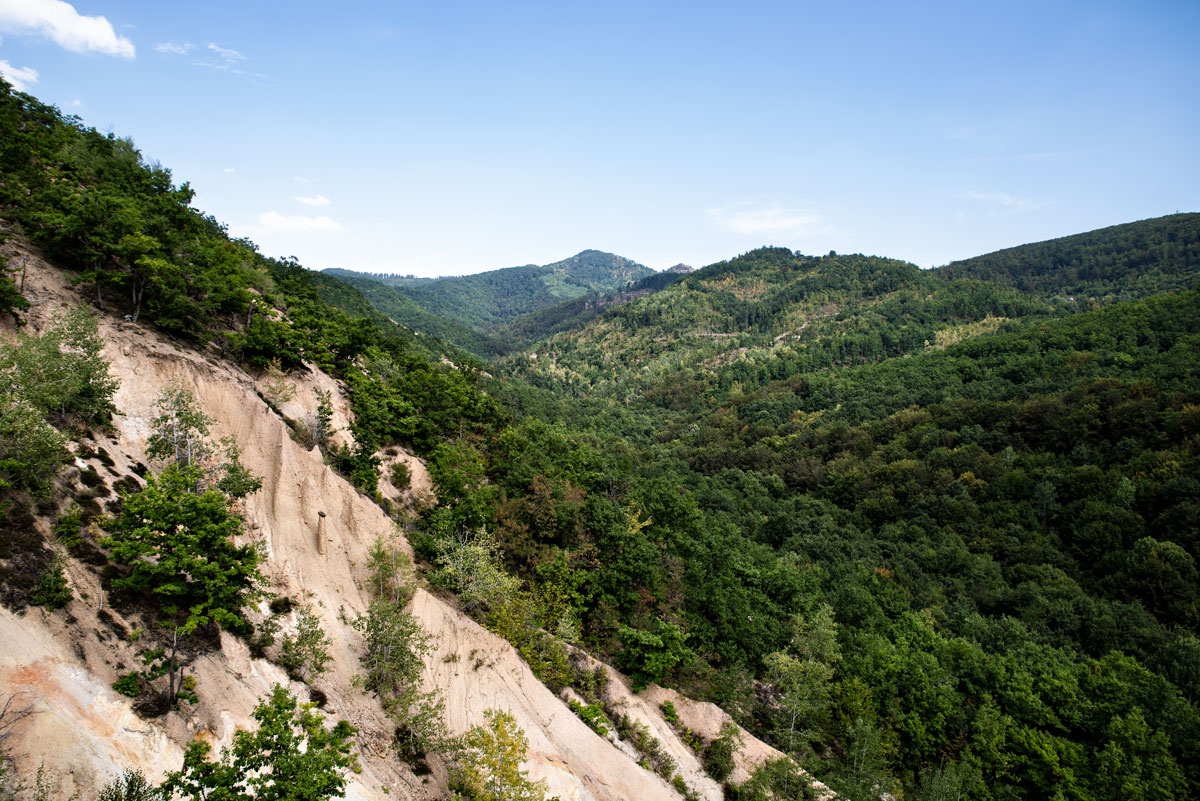
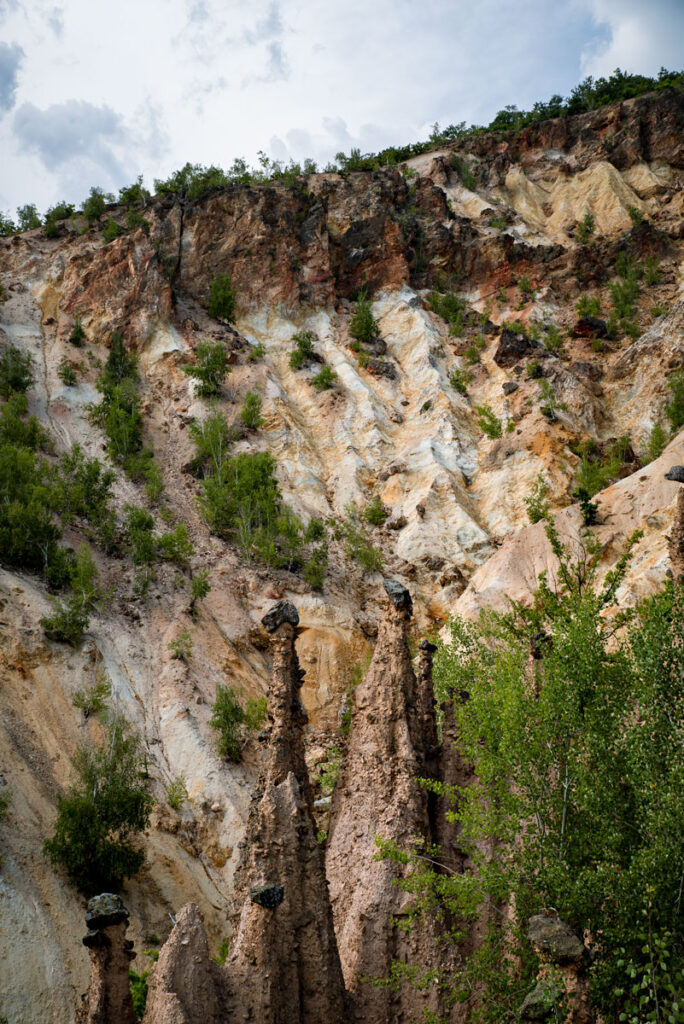
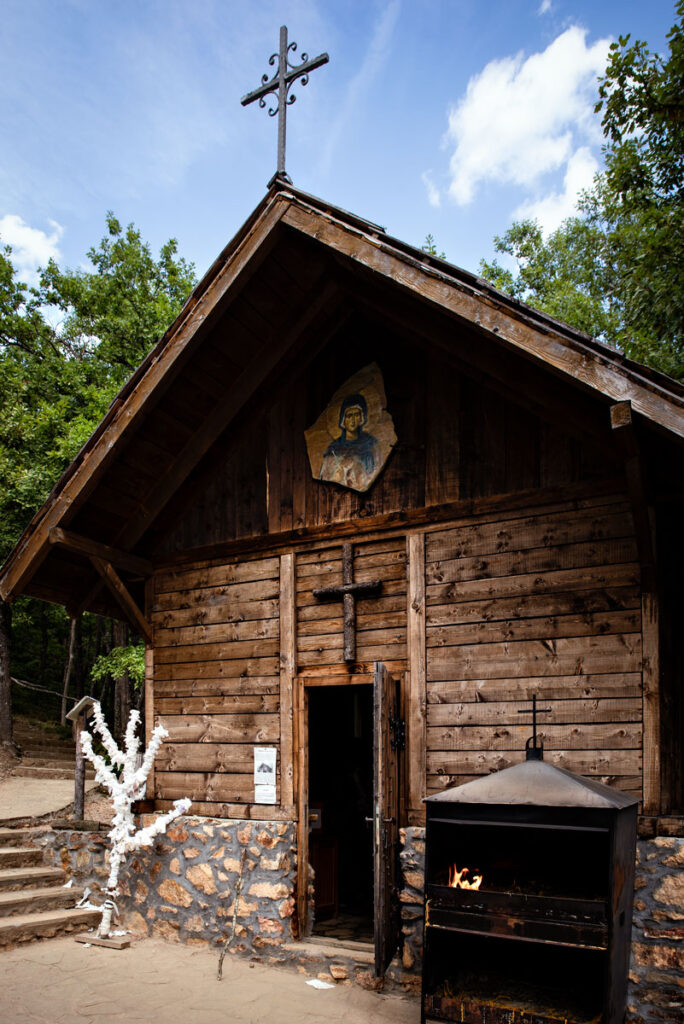
It is late afternoon when we leave Devil’s Town. We follow a lonely country road along the border with Kosovo. The area is sparsely populated and we only encounter a few cars and people. A steep, washed-out track suddenly leaves the road. A great temptation and perhaps a chance to find a sheltered spot for the night. First we explore the path on foot, then we decide to give Mr. Lux a try. We crawl our way up and discover a bramble field at the edge of a forest. A heavenly place for a night in the roof tent.
In the evening, the moon is almost full above us. The barking of dogs from a nearby village echoes eerily through the valley. Sometime around midnight, it stops and a peaceful calm returns.
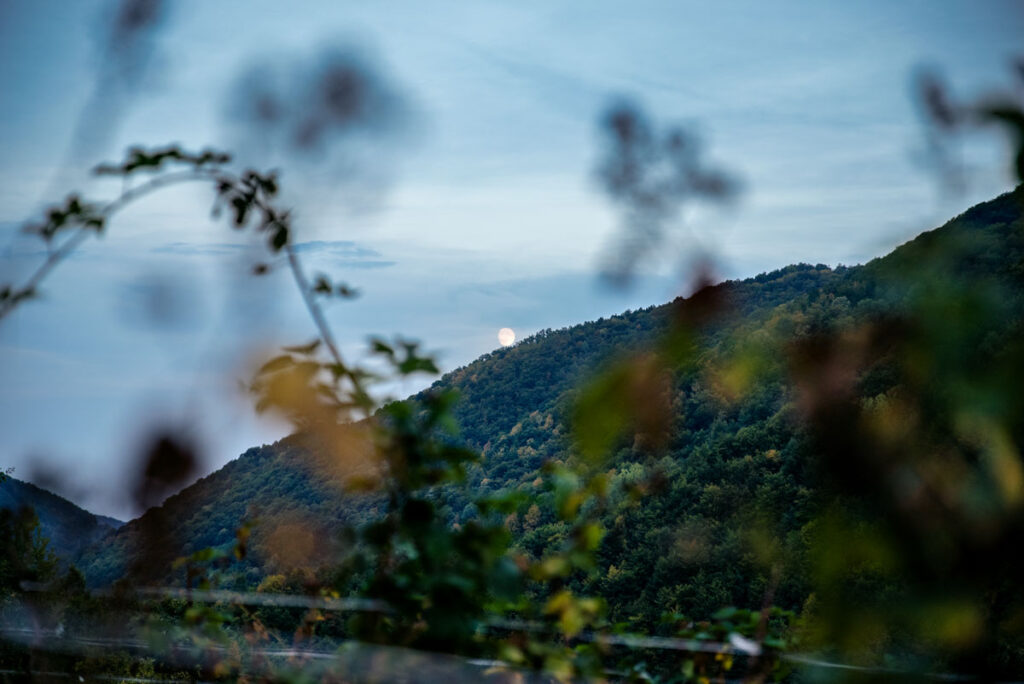
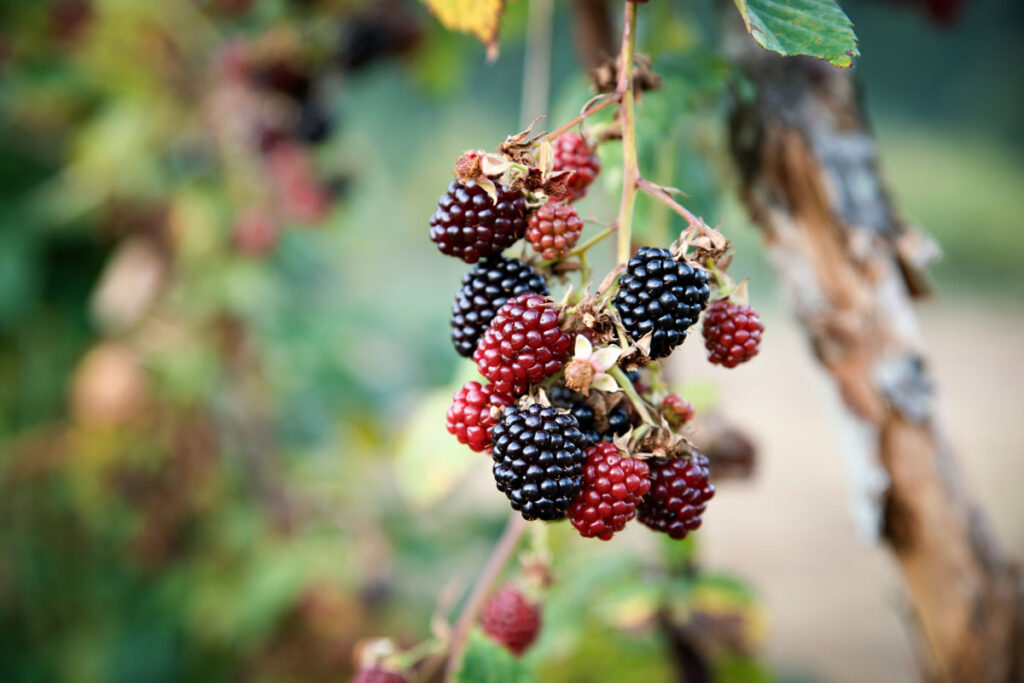
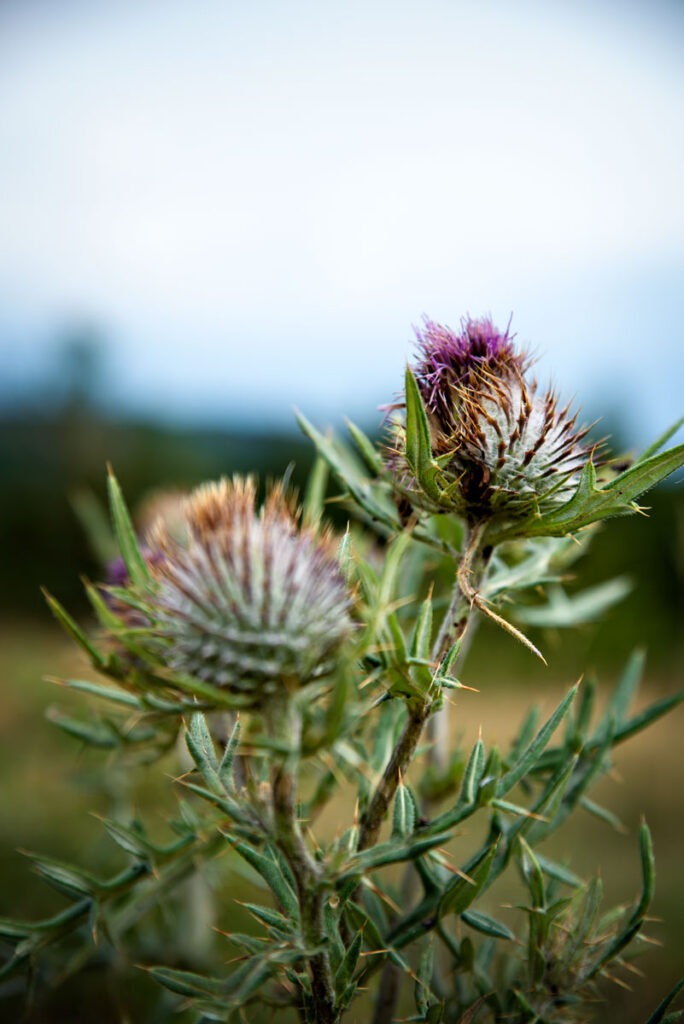

After a quiet night, we leave our campsite. Shortly before we head off, the landowner of the blackberry fields comes by. He takes a curious look at our car with roof tent. Then he spreads his arms out: “What a beautiful piece of land, isn’t it?” he asks us in broken English.
We drive into Kopaonik National Park, take a dusty dirt road and suddenly find ourselves in an idyllic mountain world. Steppe grass and mountain herbs. Ski lifts on the mountain slopes, we pass huge winter sports hotels again and again. There is also a lot going on here in summer: mountain bikers, quad bikers, motorcyclists and, of course, hikers. An incredibly beautiful piece of nature, but too touristy to find another place to spend the night. It’s not even lunchtime, so we decide to drive on.
In the afternoon, we reach the Golija National Park further west, which is almost four times the size. There are said to be wolves and bears here, as well as many other rare animal and plant species. We go on a short hike, come across herds of cows in the forest and tracks of wild boar in a clearing. As evening falls, we find a remote, expansive mountain ridge. A cold wind blows around our ears, but the silence and tranquillity are balm for the soul. No hotel, campsite or Airbnb can give us this experience.

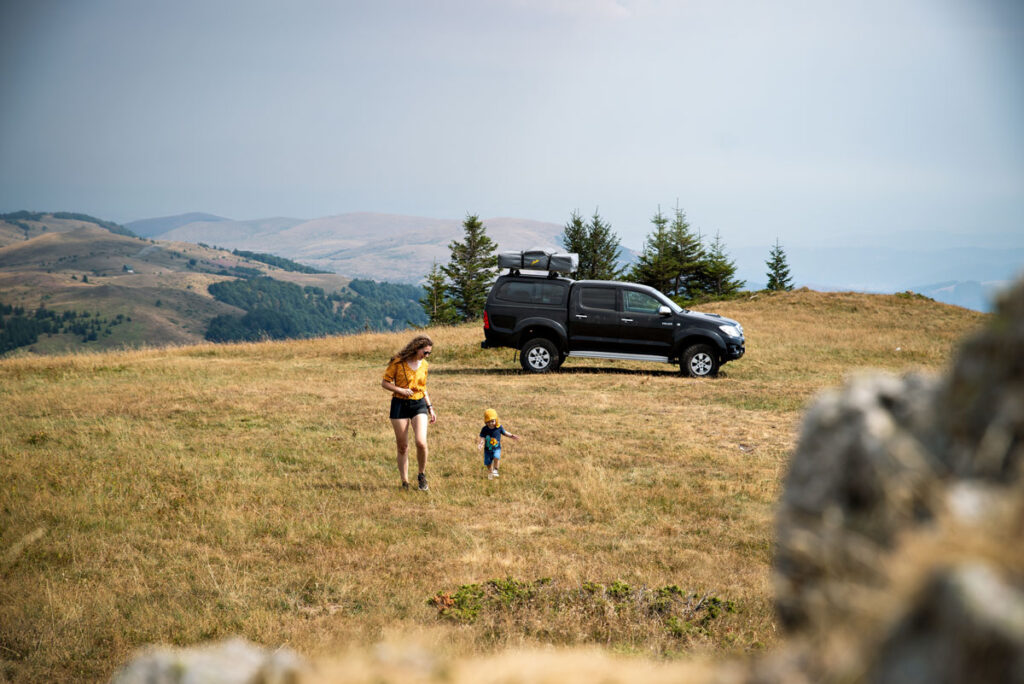
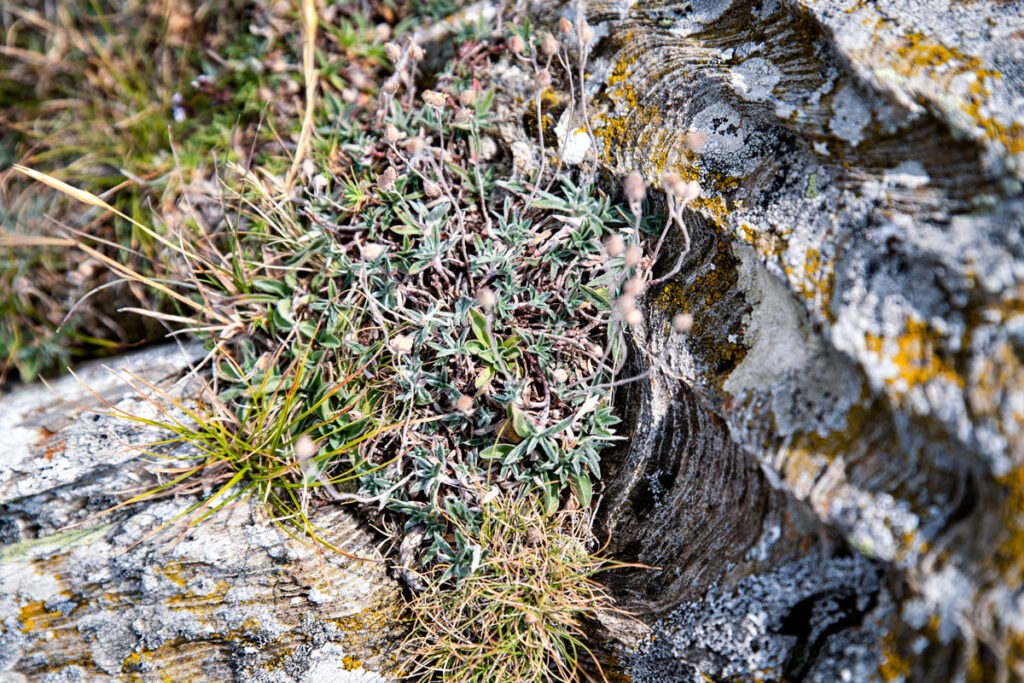
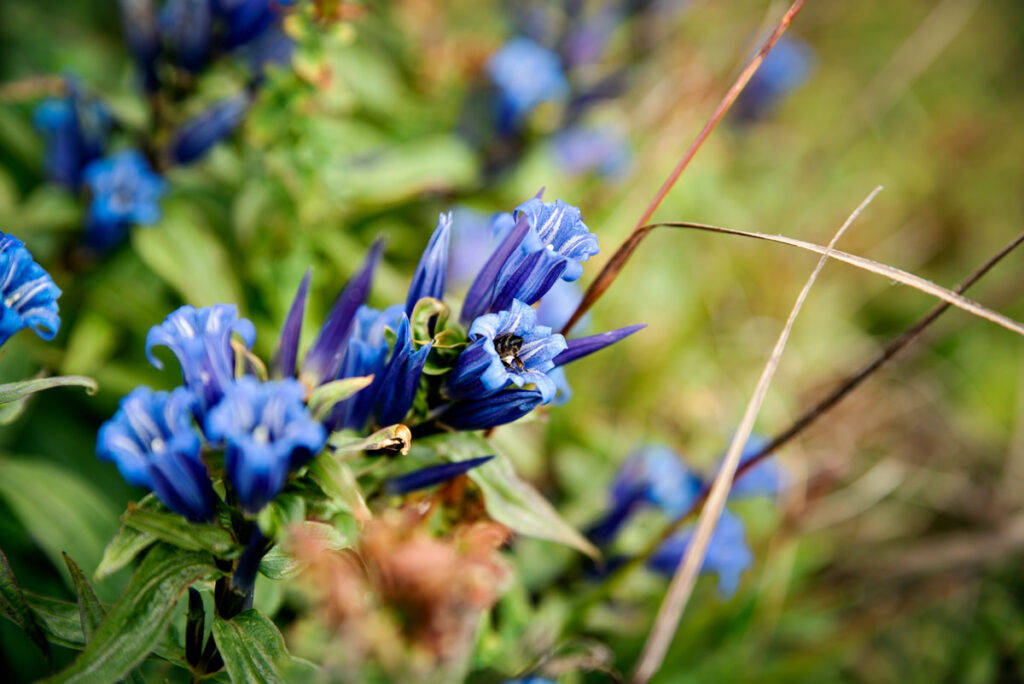
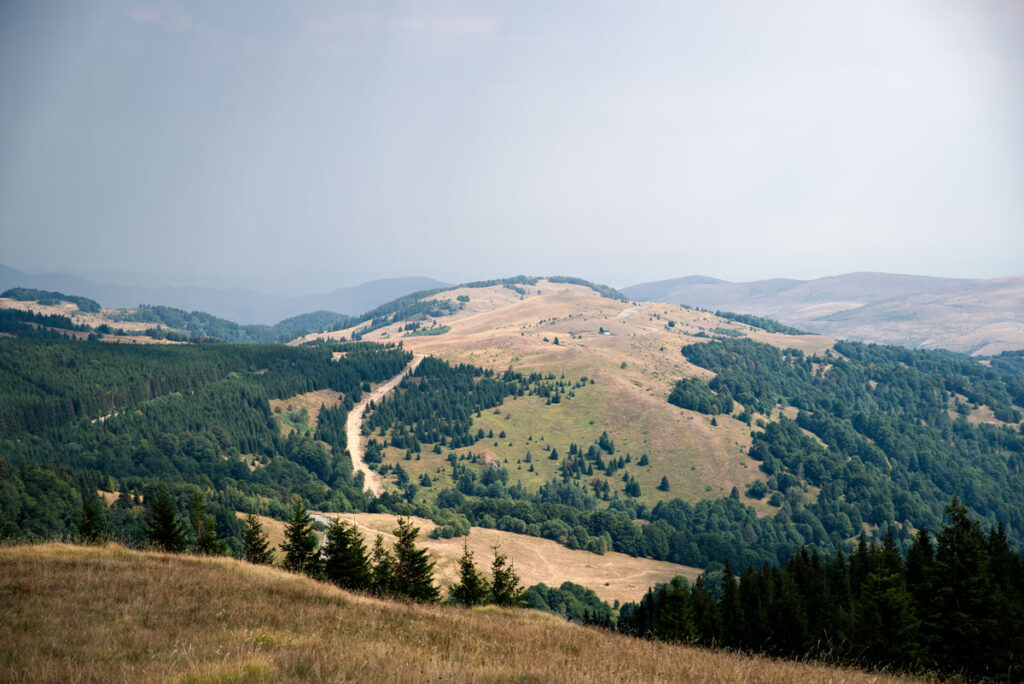
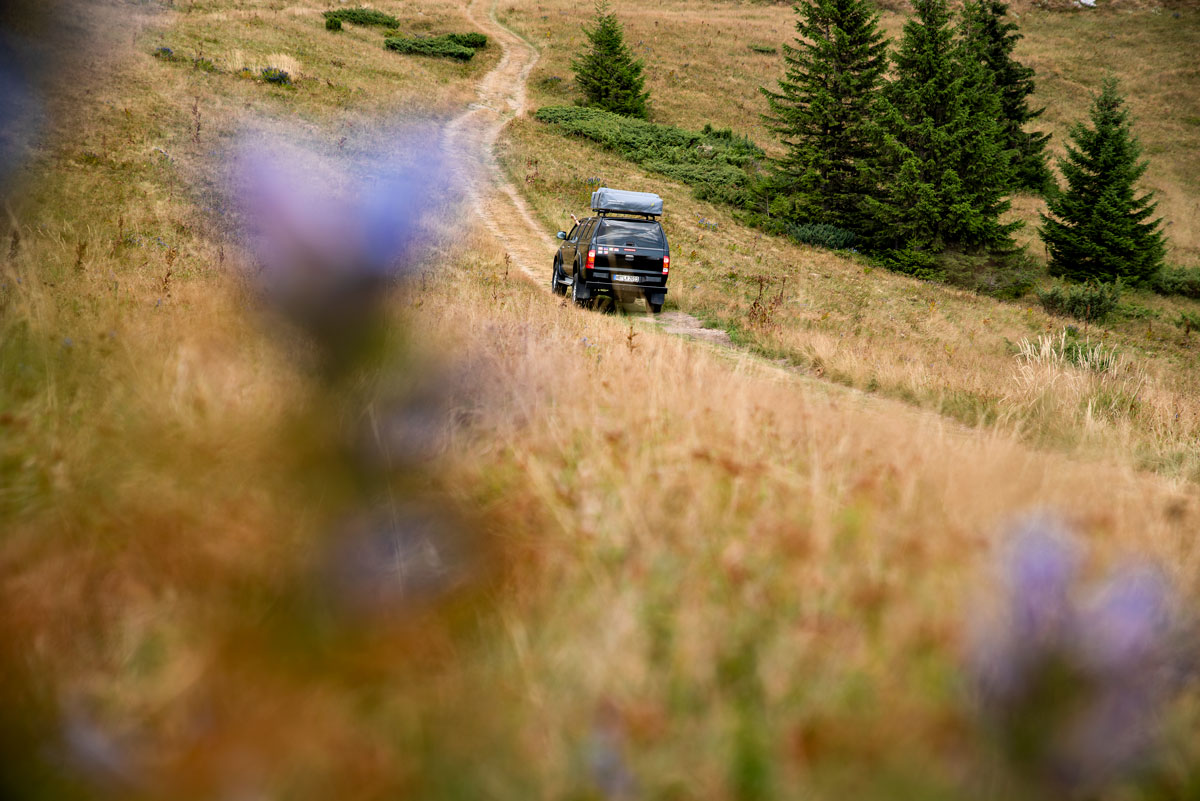
After a fine rain fell on us last evening – the first for weeks – the next day starts with the best sunshine. We set off for Krstac and follow a washed-out path from there. At a crossroads, we have to maneuver close to parked SUVs – they couldn’t go any further. For our Mr. Lux, the fun is just beginning.
After about 30 minutes, we reach a small farm. About 500 meters further on, a magnificent view opens up before us: The Uvac River has meandered through the stone like an endless snake. Its water glistens green-blue in the midday sun. We close our eyes and enjoy the moment. So far, Serbia has shown itself in such diversity that we have not yet digested it. We haven’t come across any major highlights or superlatives. Rather, the simple, rustic and natural beauty of the country.
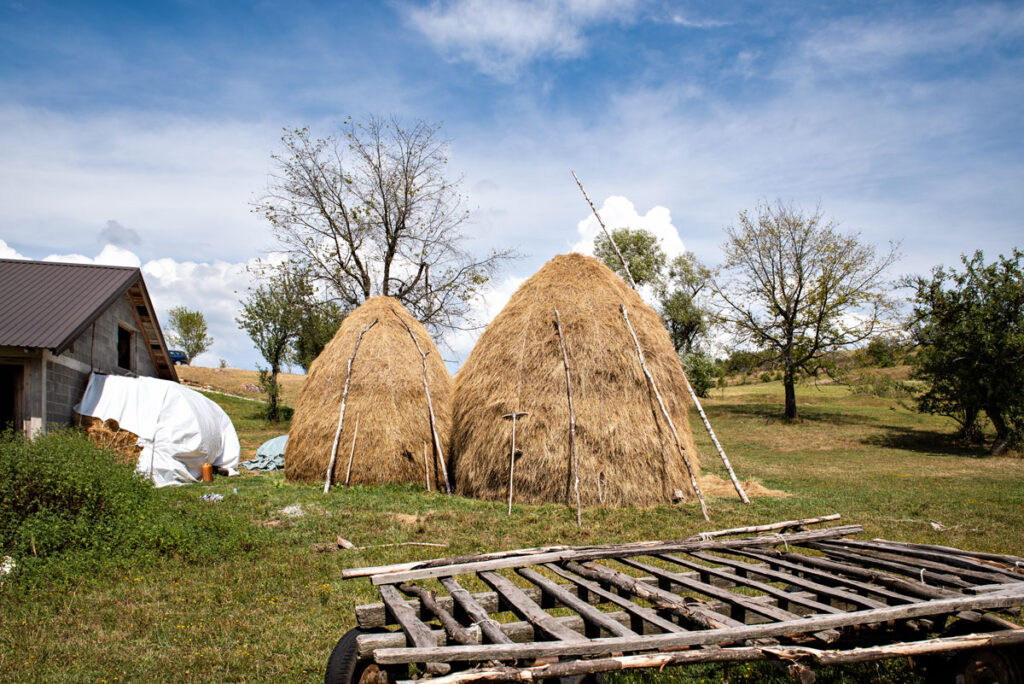
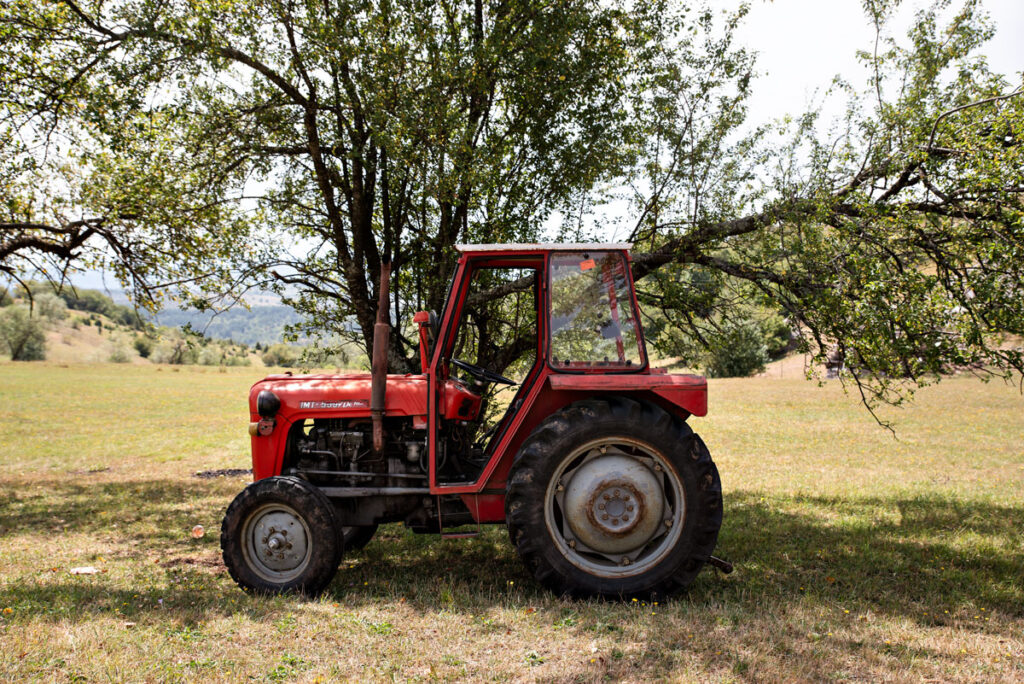
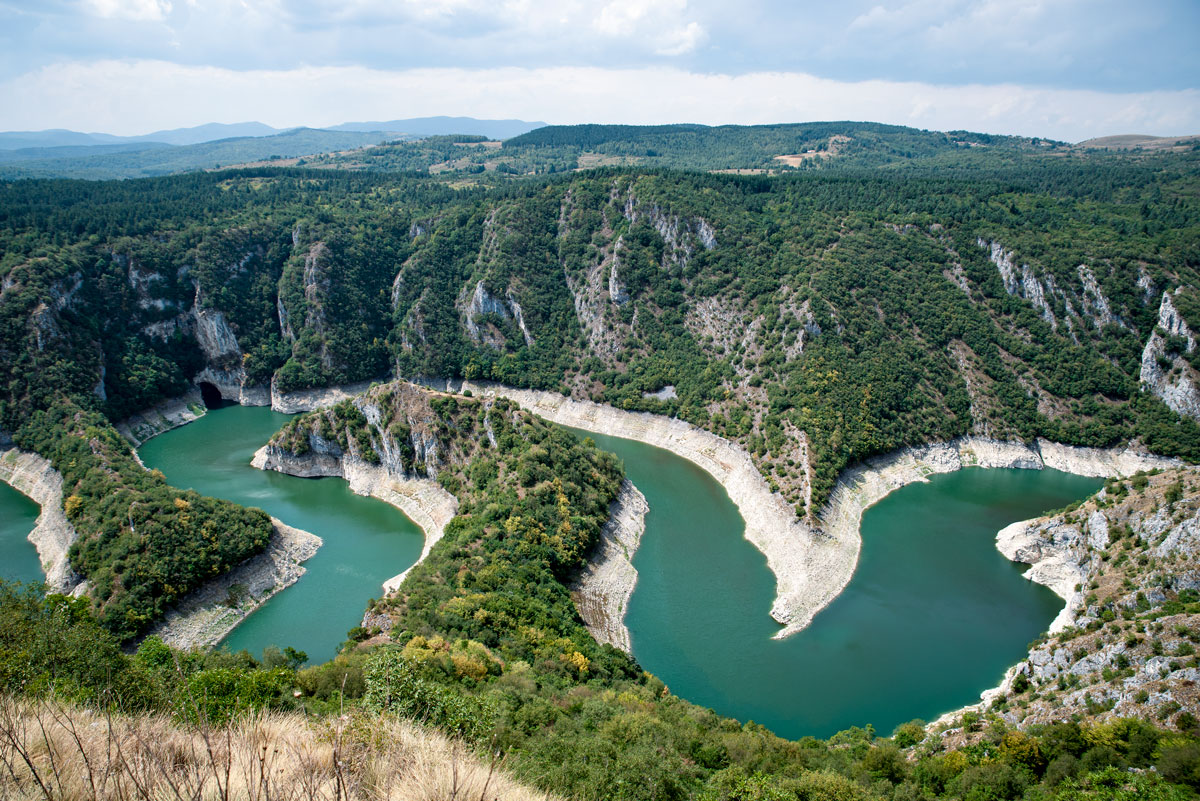
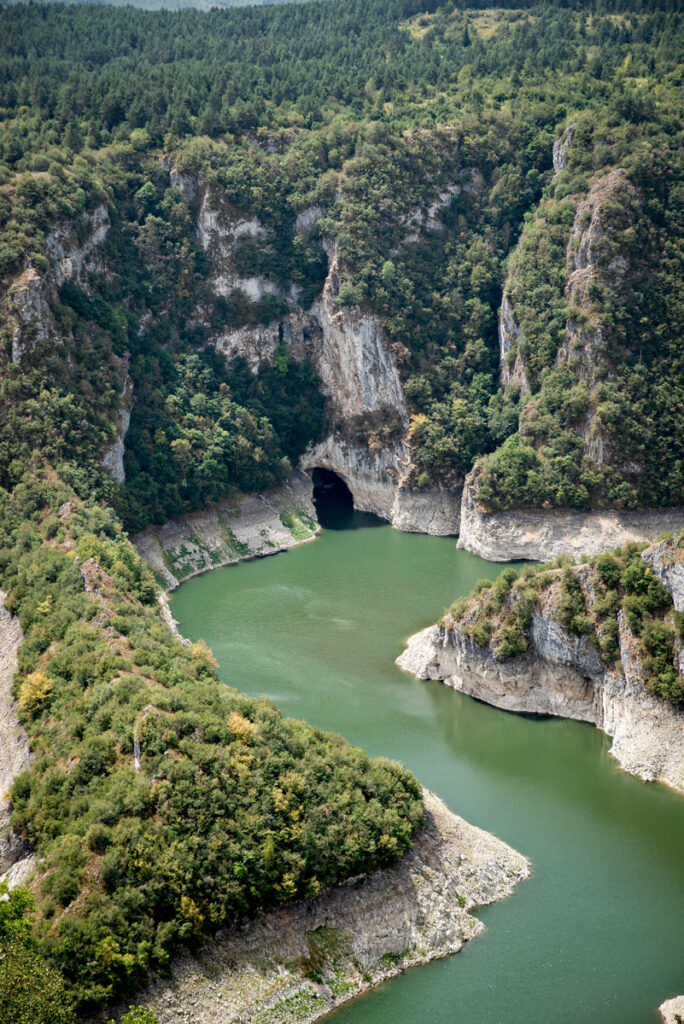
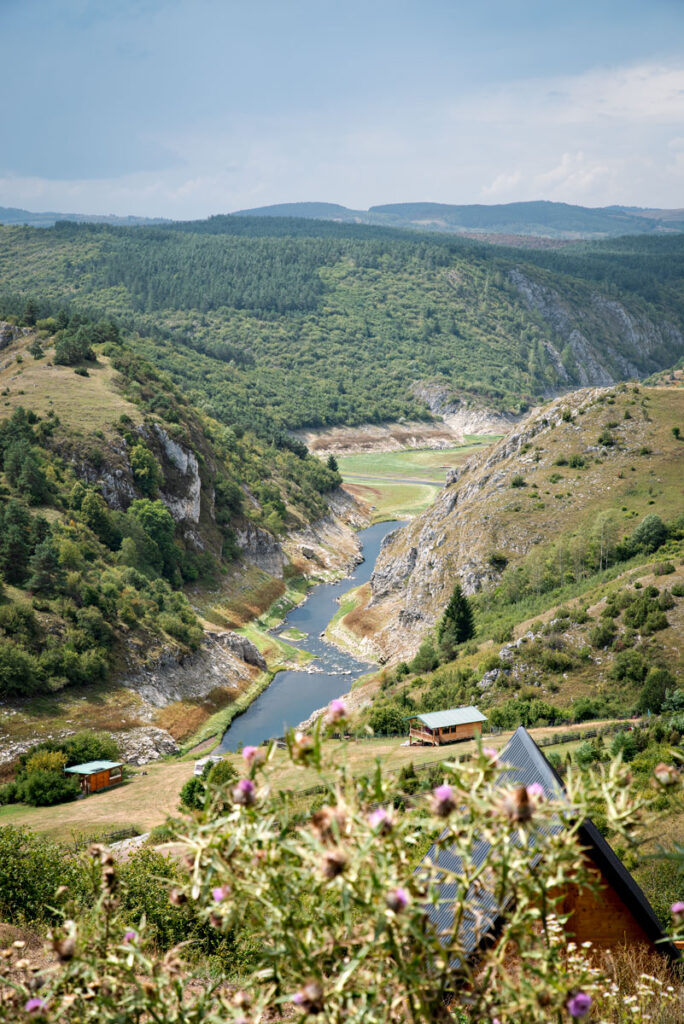
We circle the Uvac Canyon, passing forests, small villages and an open garbage dump. The wind has blown away plastic – bags hang in the trees and cans of Coke lie in the ditch. This too is Serbia: a country in the process of self-discovery, magically attracted by Russia and China, critical of the democratic West, lax nature conservation laws and high levels of corruption.
A small farm in the mountains: pear trees, conifers and flocks of sheep. A walk takes us down into the valley to the Uvac River, which has been dammed here to form a small lake. Excursion boats and fishing boats are moored on the banks, and vacation homes are located at a safe distance in case the water level should rise. There is little going on that summer’s day. Thunder rumbles in the east and the temperature has dropped dramatically. In the evening, home-made plum rakija is served. Lightning flashes on the horizon – luckily the storm will pass us by.
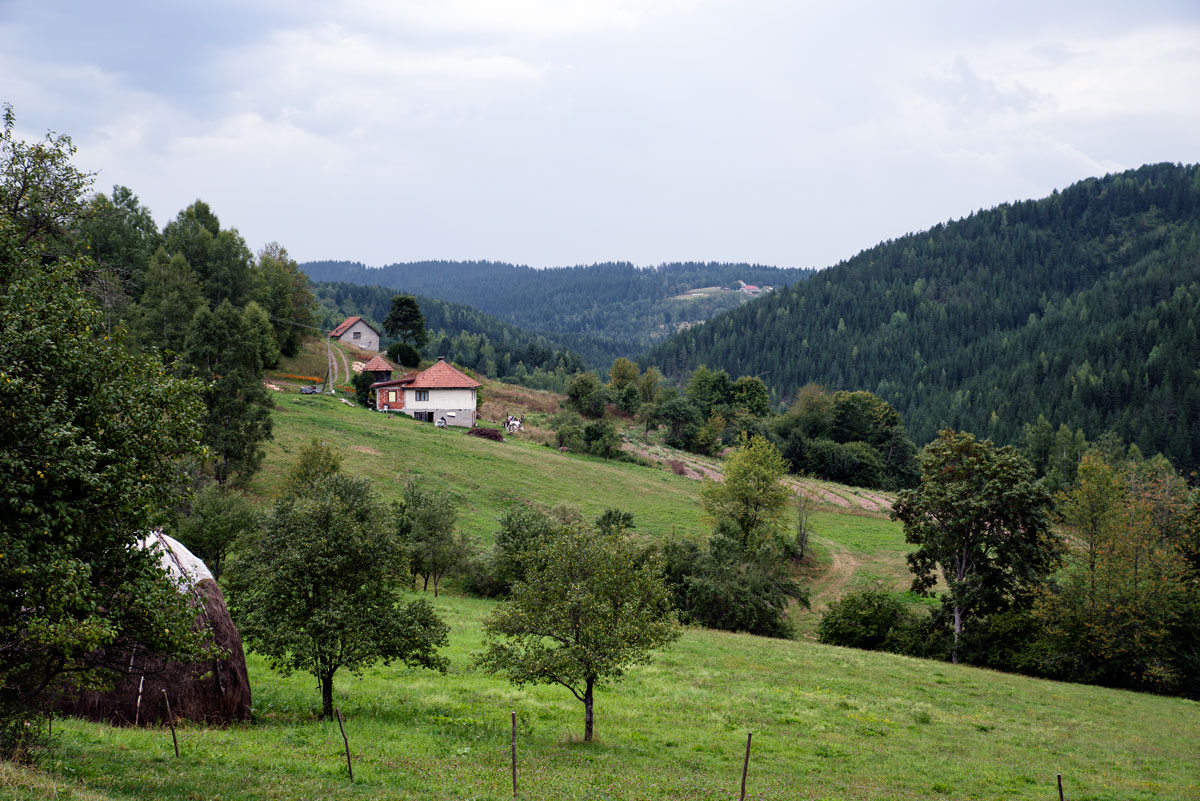
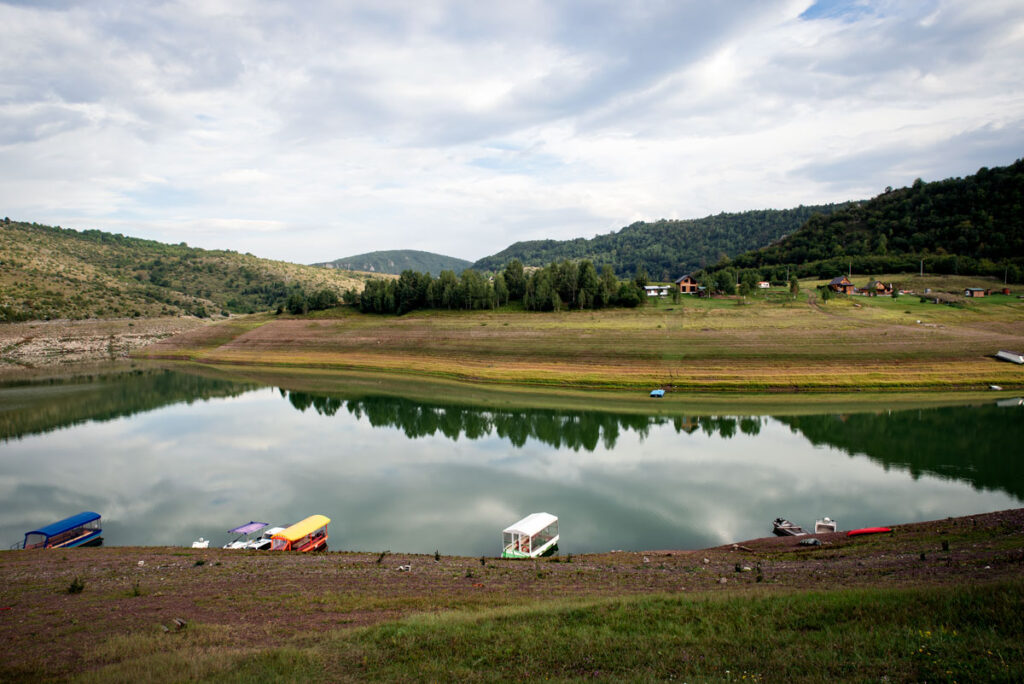
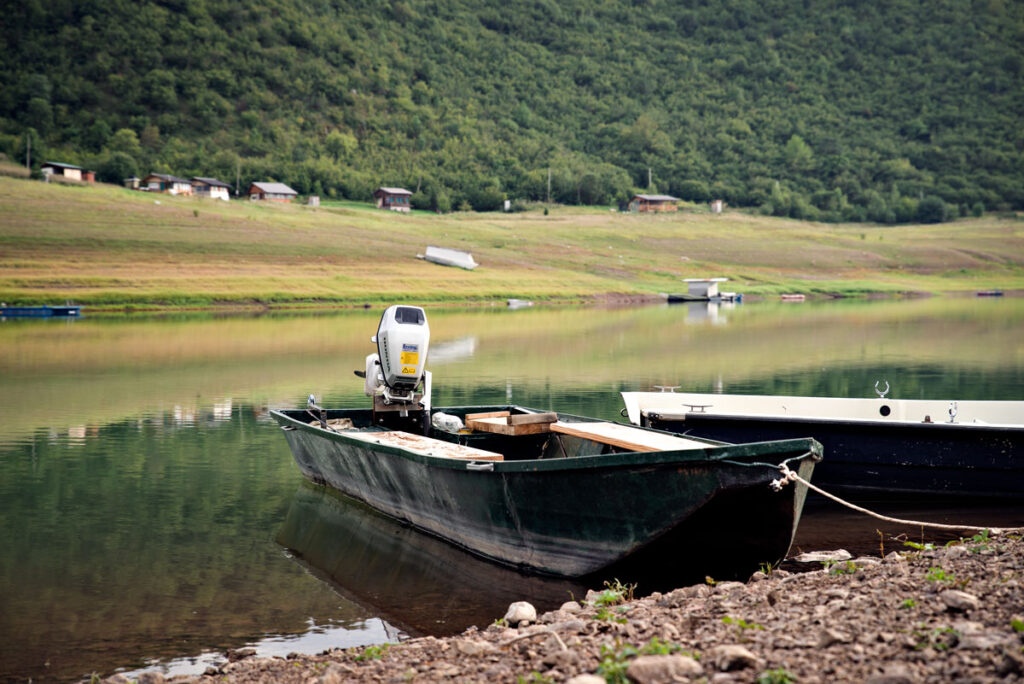
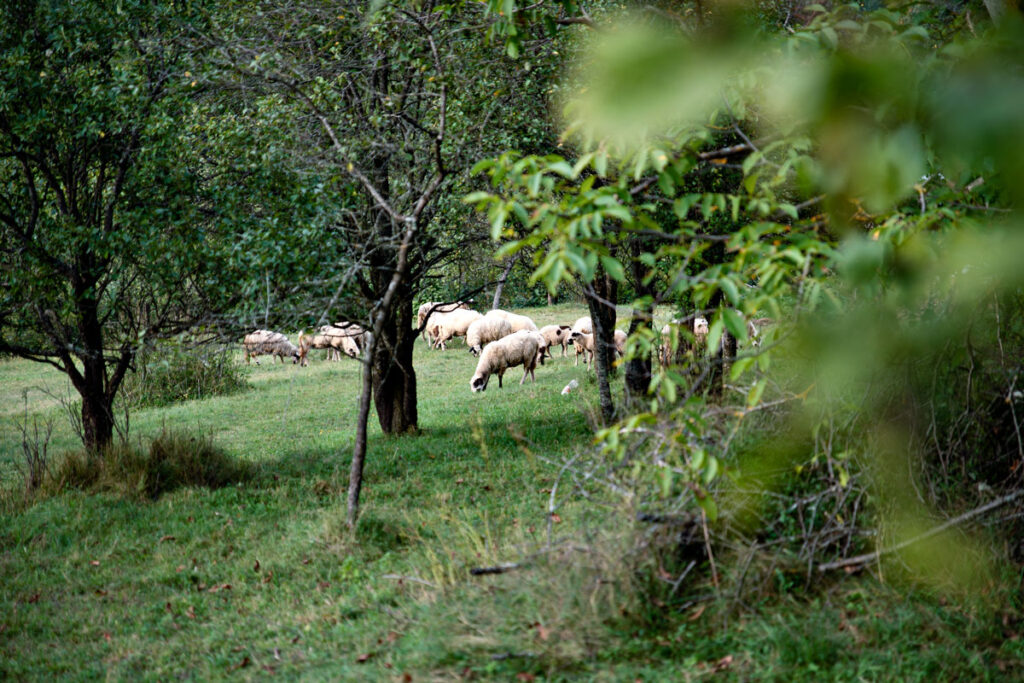
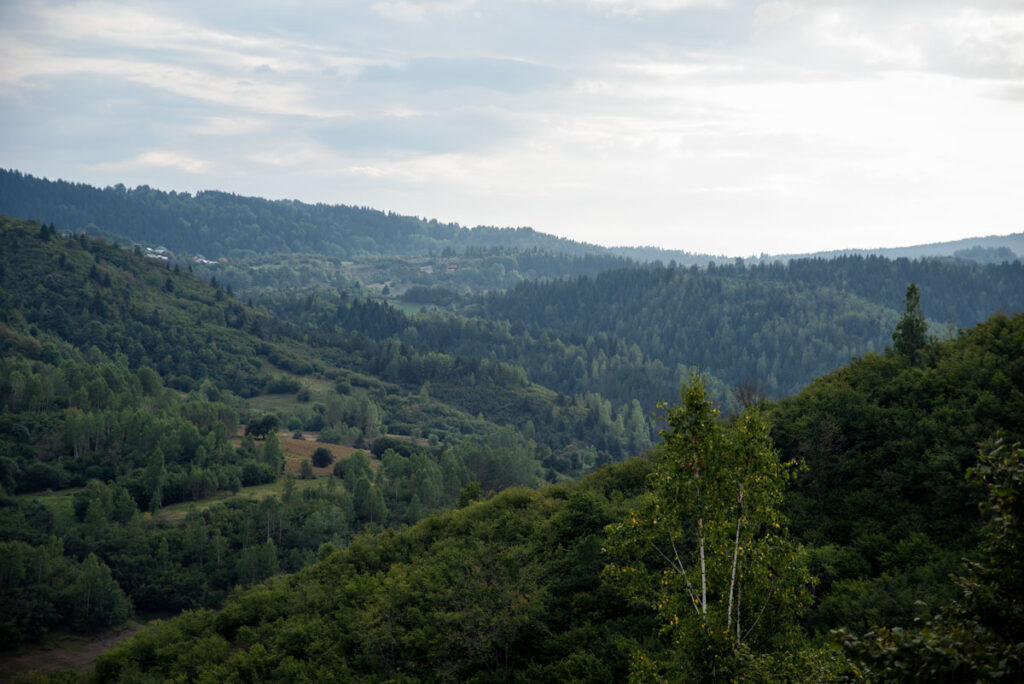

The end of our trip to Serbia is just around the corner. Heading north-east, we cross ski resorts and vacation resorts before reaching the Tara National Park. Our first hike takes us to the northern border with Bosnia and Herzegovina. The Drina River flows deep below us and forms the border between the two countries. A dam wall has caused it to swell into a small lake. The view of the sapphire-blue water is framed by pine trees, creating an unreal postcard motif. The weather is good, the view is clear and wide.
We have lunch in Mitrovac, the tourist hub of the national park. Afterwards, we drive deeper into the heart of this huge forest, where there are plenty of bears. Once again, thanks to Mr. Lux, we reach a secluded spot on the shore of Lake Zaovine. On the mountainside above us lies a ruined settlement of vacation homes. A landslide has buried houses, telephone masts and roads. One last dip in Serbian waters before the returning sun of this summer’s day dries our skin.
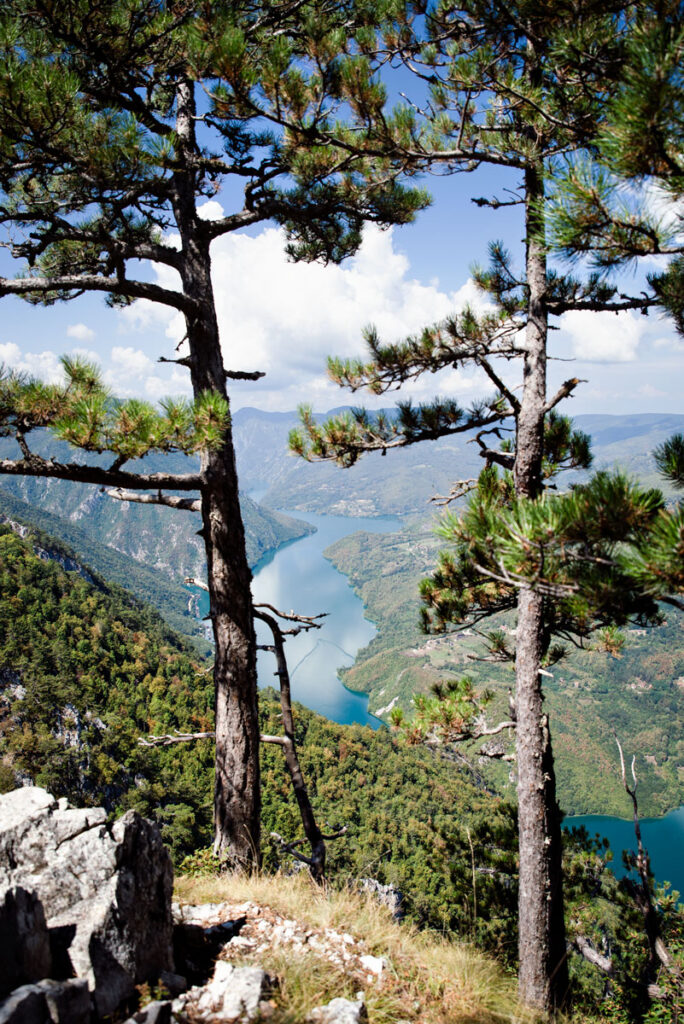
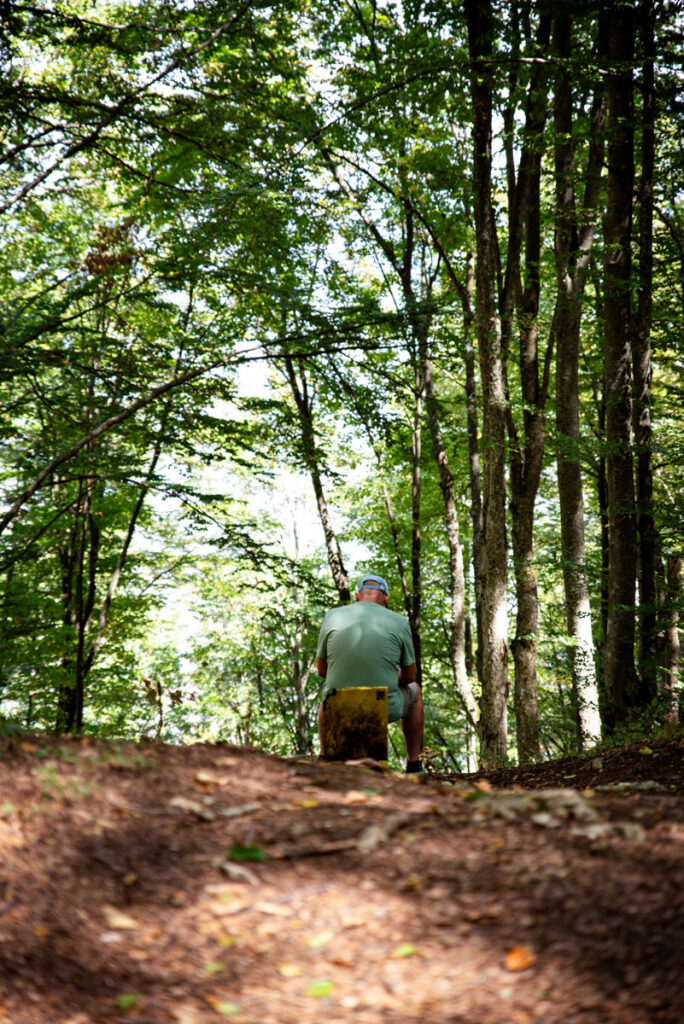
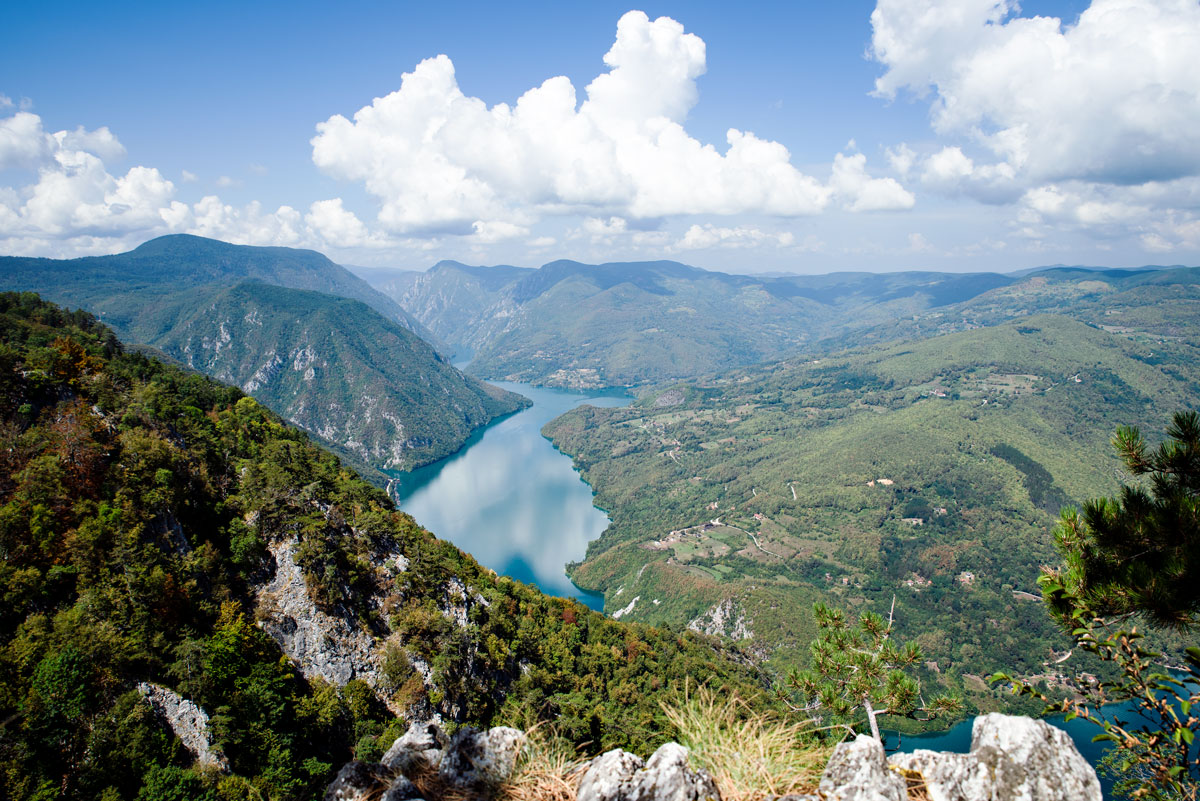
We rounded off the last evening with a typical Serbian meal in a rustic inn. Now we are at the supermarket in the border town of Bajina Bašta to buy some water and fresh fruit for the day. Then we cross over into Bosnia and Herzegovina. There’s not much going on at the border: we open the trunk once, explain the box on our roof (yes, it’s a roof tent) and then we’re allowed to cross. In the last ten days, we have seen many facets of Serbia. A capital city between new beginnings and the past, small provincial capitals with a charm all of their own. We have hiked through the Devil’s Valley and spent the night in untamed nature. The conversations and encounters with the people have sharpened our perspective and left us doubtful and helpless. So many rifts and seemingly uncrossable lines run through the society and ethnic groups of the Balkans, so much hatred and rejection are deeply rooted. A web of lies, myths and ignorance keeps this dark machine running. Like so many countries, Serbia is at a crossing point – should it turn east or west? Which way will you go, Serbia?
Info about our trip
Serbia has left us with mixed feelings. On the one hand, the country has a lot of culture and history to offer: Old forts, an interesting mix of architecture and highly explosive, political-historical traces that you can follow and explore. Serbia’s nature also has its charms and makes a road trip particularly attractive for overlanders and off-roaders. The north of Serbia is rather flat and characterized by sparse bushes. Towards the south and west, the landscape is covered with rivers, canyons and dense forests. So there is no shortage of variety. But there were three things that really bothered us about what is actually a beautiful country:
- Its relationship to its history and recent past: best make up your own mind about this, but if you have some interest in politics and history, your hair will stand on end as you delve deeper into the Serbian “interpretation of history”. We perceived Serbia as a very nationalistic and conservative state. Unfortunately, the relationship with the neighboring countries (especially Kosovo and Bosnia) is still not really good. There also still seems to be a lot of prejudice against certain ethnic groups among the population.
- People smoke – always and everywhere. That’s why we only recommend a stay in Serbia in summer, when you don’t necessarily have to sit inside in the restaurant. Unfortunately, we also had one or two hotel rooms that smelled of smoke (although it is generally forbidden to smoke there).
- Meat, meat and meat. If you’re vegetarian or vegan, you’re left with bread, chips and grilled vegetables. But we’re already used to that from trips to the Middle East.
For some, these three points won’t be worth mentioning. For others, like us, they somewhat spoiled our stay in the country. Fortunately, we had everything we needed to cook for ourselves and the weather was actually always good enough for us to stay outside without smoking.
You should plan at least ten days for a short round trip. Two to three weeks is ideal if you want to really immerse yourself in nature. There are also said to be very beautiful national parks and off-road opportunities in the east of the country, which we were unable to visit on this trip.
Serbia is an affordable destination, ideal for travelers on a small to medium budget. The cost of living is lower than in Western Europe and even in large cities such as Belgrade or Novi Sad, accommodation, food and activities are relatively inexpensive. Simple meals in traditional restaurants (kafanas) are reasonably priced, and Serbian specialties can be enjoyed for little money. Activities and entrance fees to museums or sights are also generally not too expensive. The highest cost factor is probably the journey to and from the destination and fuel costs (we drove around 3,000-3,500 km to Serbia and back).
As already mentioned, grilled meat is the main dish on the menu. Serbian cuisine is hearty and differs only in details from the cooking skills of neighboring countries. Popular dishes include Ćevapi, small grilled minced meat sausages, which are often served with onions and bread, and Pljeskavica, a type of large minced meat burger. Sarma – cabbage rolls filled with rice and meat – is also a must. The meal is usually accompanied by fresh bread and side dishes such as ajvar, a paprika and eggplant spread. Traditional rakija (fruit brandy) is always included – even if you are not eating. Vegetarians can stick to bread and grilled vegetables. But you can get away with it quite cheaply: for 10-15 euros per person you should get a really more than substantial meal. You will find a nice Etno restaurant with animals and authentic food on the way from Novi Sad to Belgrade: Salaš Mali Park.
Note that smoking is permitted in almost all restaurants. Even if there are non-smoking areas, these are not taken too seriously and the door to the adjoining smoking room is wide open.
Accommodation ranges from around 40 euros in small towns to 70 euros in larger cities – you should be able to find nice and clean accommodation for this price. In Belgrade, rooms cost a little more. In the national parks and ski resorts in particular, you can rent beautiful wooden cabins with facilities ranging from simple to luxurious. We estimate that the snow probability in Tara National Park, for example, is quite high in winter, so the dream of a secluded mountain hut in a winter wonderland should be easy to realize here – and at a much lower cost than in Austria or Germany.
Otherwise, privately rented apartments are also widely available and if none of this is for you, you still have the option of wild camping. Although this is not officially permitted in Serbia, it is generally tolerated. As always, make sure you leave your campsite the next day cleaner than you found it.
Serbia is generally a safe country to visit. The crime rate is low and violent crimes against tourists are rare. The political situation is stable, but demonstrations can occasionally take place, especially in Belgrade. The border region with Kosovo can also be affected by unrest. Road traffic requires attention, as driving is often much riskier than in Western Europe. Sudden storms and landslides can occur in the mountains, and earthquakes cannot be ruled out either. When out in nature, watch out for wild animals – stay away from wild boars and keep food safe from bears in the national parks.
The Serbs are known for their great child-friendliness and hospitality. Families with children are warmly welcomed everywhere and it is common for children to receive special attention and care. Restaurants often offer child-friendly dishes and many cafés and parks have playgrounds or open spaces for children to play in. However, these are often in poor condition. You will generally look in vain for public toilets or even baby changing rooms, and even restaurants rarely have baby changing facilities – the toilets there are usually in an unkempt state anyway. In addition, spending time in public indoor spaces (especially restaurants) can be severely impaired by the high levels of smoking. A no-go for us!
Cities such as Niš, Novi Sad or Novi Pazar are best explored on foot. In Belgrade, the sights are more spread out, but if you are in good shape, you can still walk around everything here. Alternatively, there are also buses. The country itself is best visited in your own (rental) car. It shouldn’t necessarily be a low-slung sports car, but otherwise the roads are in good condition. If you want to drive to the smaller villages or viewpoints, you should at least do so in an SUV. A normal car can manage most routes (as the Serbs like to prove), but it is certainly not good for the material. Note that some highways have toll booths at the exit.
Off-road driving: Serbia is a little paradise for off-road drivers. There are some incredibly beautiful gravel roads, which can also suddenly become more challenging. We really enjoyed exploring the countryside on uneven paths and finding the best spots to camp in the evenings. In fact, we were far more impressed by this side of Serbia than the cities and people.
- Anyone interested in the modern history of the Balkan region should read the Geschichte Jugoslawiens by Marie-Janine Calic
- Norbert Mappes-Niediek sketches the end of Yugoslavia in a magnificent way in Krieg in Europa: Der Zerfall Jugoslawiens und der überforderte Kontinent
- Die Brücke über die Drina: Eine Chronik aus Visegrad by Ivo Andric is a brilliant tale from a small village on the border of Bosnia and Serbia
